- Our Mission

Setting Up a Learning Hub to Innovate Instruction
High school teachers can support engagement and innovation with STEAM and career-focused activities that tap into students’ curiosity.
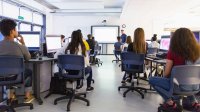
When you walk into many schools these days, you will encounter updated 21st-century learning spaces with makerspace equipment, flexible seats, and projectors—all with the goal of providing space for students to innovate, create, explore their interests, build on their curiosities, and connect with the world around them. Once your school invests in updating this space, though, how do you create the culture and the programming to have students and staff utilize the space in the way it was designed?
At my school, our Learning and Innovation Hub is an incredible space with areas to host classrooms, breakout rooms to support collaboration, and flexible seats to encourage collaboration—and it’s equipped with whiteboards and projectors. I’m going to share some of the things we’ve been doing so that you can replicate some or all of these items in your space to ensure that your 21st-century learning spaces are functioning the way you want them to.
How to Incorporate STEAM Challenges
Every month, we host STEAM (science, technology, engineering, arts, and mathematics) challenges in our space during all lunch periods. These challenges serve as fun, low-stakes opportunities for any student to use their critical thinking skills. One day a month, the challenge materials are set up on a few tables in the Hub, where all students are invited to participate in the challenge. To encourage students to participate, we choose challenges that any student would be interested in, like paper airplanes and catapults.
These challenges are also low-prep, so they are easy to maintain and set up because the materials don’t cost a lot of money and don’t require any equipment. Students can work on these activities independently or with their peers. I was inspired to do monthly STEAM challenges when I first started at my school after seeing Maker Maven ’s STEM challenges. Here are some examples of what we’ve done in the last year:
- Can you make your own 1-minute stop animation?
- Can you make a game out of a box lid?
- Can you build a desktop siege engine to topple the card castle?
Include a Monthly Pathway Focus for Students’ Future
To expose students to the many different college and career avenues they can take once they leave high school, we highlight a different pathway every month. The pathways have included manufacturing, engineering, technology, trades, finance and business services, health sciences and technology, information technology, arts and communication, and human and public services, as well as agriculture, food, and natural resources.
Each month, we design activities and bring in guest speakers from both school and the community, all with the goal of exposing our students to as many opportunities as possible. For every month, I created a screensaver to have on our TVs in the Hub that provides a brief overview of the pathway, potential careers within the pathway, and a QR code to a list of professionals in the field that students can hear from. Below is the screensaver for the arts and communication pathway:
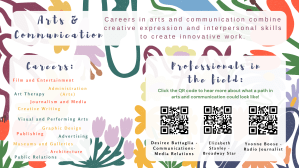
For the arts and communication month in particular, we’re hosting blackout poetry days, “Color your stress away” coloring days, and button and sticker making. Blackout poetry involves taking a piece of writing (e.g., a page from a book, magazine, or newspaper, or a letter) and redacting words to create something new. One of the first pieces of equipment we purchased was a button press, so that students can design and create buttons, and we also have a silhouette cutter for students to design and create stickers.
We’re bringing in a poet for a virtual visit, and we are hosting a panel with design thinking professionals. The guest speakers will share how they found their path, how they dealt with adversity along the way, and some of the skills that were essential to their success. We bring in several local community members to share their experiences, and this can lead to networking opportunities for students.
Offer a Menu for Partnership With Teachers
In addition to facilitating challenges and bringing awareness to various pathways after high school, my other focus is partnering with teachers and bringing them into this incredible space as well.
At the beginning of the year, I created a menu for staff to outline all the ways I could support their classes, such as facilitating “speed dating” for independent reading, creating a gallery walk for engagement, providing lessons on research techniques and credibility, and hosting a personalized challenge for their class and content. “Speed dating” refers to students spending 5 minutes at a table with 15–20 novels in a specific genre. During those 5 minutes, students peruse all the books to see which ones spark their interest. The goal is for them to leave with at least one book and have a list of books to read in the future. The menu provides a starting point for teachers to have options for how to utilize a new space.
In addition to creating the menu, I either visited each department or sent an email listing specific ways for that department to utilize the Hub. It was important for me to explicitly share some ideas with each content area for how they could utilize the space. For example, I let the math department know that they could use window markers on our windows for increased vertical space when students practice their learning. After I shared these ideas with each department, the number of teachers reaching out to me to utilize the space increased immensely. Now, I have at least one teacher per day utilizing the space for instructional purposes.
After you’ve learned a little bit about what we do in our space, is there anything that sparks your interest? What can you do in your space to provide similar opportunities for students to explore their interests and possibly find their path?

Tennessee Open Education Hub
A Statewide Professional Learning Community for Faculty
Inspiration. Ideation. Collaboration.
Learn About the Tennessee Open Education Hub
Open Educational Resources are more than free textbooks. OER empower faculty with the freedom to design and employ the most effective materials for their instructional enterprise. OER enable new ways of teaching, engaging, and connecting with students.
The Tennessee Open Education Hub brings together the intellectual and creative power of faculty throughout the state, providing a place to build and share resources with the common goal of improving student learning outcomes.
For more information about how Tennessee is making college more accessible and equitable, visit Tennessee Open Education .
o·pen
/ˈōpən/
freely available or accessible; offered without restriction
with no restrictions on those allowed to attend or participate
accessible to new ideas
make more available or widely known
Tennessee Collection
Explore collections of course materials created by colleges and universities in Tennessee

Mathematics
7 Resources

30 Resources

Natural Sciences
2 Resources
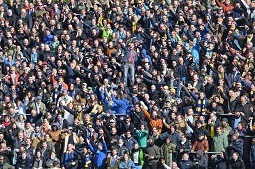
Social/Behavioral Sciences
4 Resources

Nursing and Allied Health

Humanities/Fine Arts
26 Resources
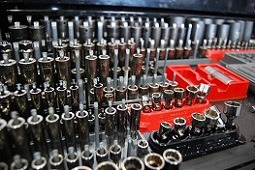
Career and Technical Education

Engineering

Business and Communication
3 Resources

Tennessee Statewide Dual Credit (SDC)
12 Resources
OER Commons Collection
Explore collections of course materials created by faculty, institutions, and organizations around the world

200 Resources
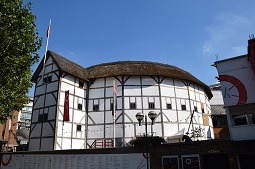
222 Resources

232 Resources

341 Resources
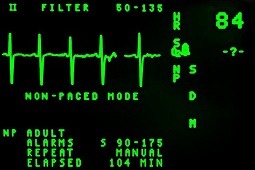
98 Resources
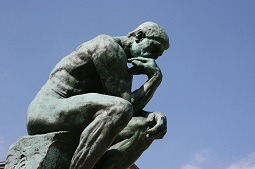
256 Resources

119 Resources

80 Resources

242 Resources
OER Working Groups

Register and create a profile, to be able to join your system, college, or university group and begin collaborating to organize, create, and share resources with your colleagues
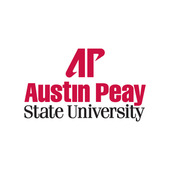
Getting Started
Open author.
Get started using our OER authoring tool, Open Author. This video walks you through how to author and remix; including how to add and format content, import and attach resources, embed media, add co- authors, check for accessibility, describe your resource, select a license, align to standards, publish, and download.
Created by ISKME. Licensed Creative Commons BY-NC-SA.
Create a Profile
This video tutorial explains how to create a Profile on OER Commons. 2016 license "Creative Commons Attribution Non-Commercial Share Alike"
How to Use Groups on OER Commons
This video tutorial shows users how to create and manage groups on OER Commons, and how to share resources within those groups.
Trainings & Webinars
Tennessee open education introduction.
Tennessee Textbook Affordability Taskforce members were invited to get an early look at the soon to be launched Tennessee Open Education Hub - the first of its kind collaborative platform that supports courseware improvement for both public and private colleges and universities in Tennessee. This informative session provided participants with an opportunity to discover tools to identify, curate, design, build, and share high-quality resources to impact teaching and student learning outcomes. We also showcased OER exemplars and use cases from colleges and universities in Tennessee and beyond.
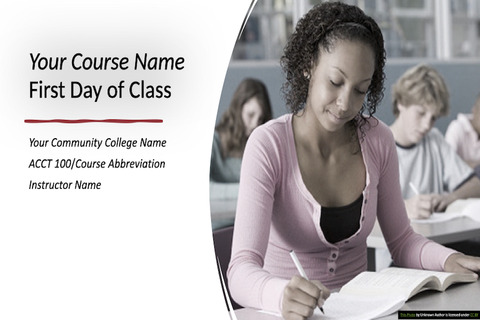
OER First Day of Class
Managing groups & sharing oer training.
Tennessee Open Education Hub Group Administrators and Grantees joined us to explore the Hub collaboration and authoring tools and workflows, and develop plans for how to best utilize groups to facilitate engagement and sharing of resources.
Instructions for how to manage groups and author resources
TN Open Education Hub Overview
This webinar was an introduction to the Tennessee Open Education Hub for faculty and librarians interested in accessing high-quality digital resources, connecting and collaborating with others, and sharing resources.
Tools & Templates
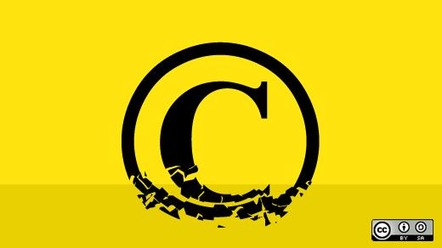
Permissions Guide for Educators
This guide provides a primer on copyright and use permissions. It is intended to support teachers, librarians, curriculum experts and others in identifying the terms of use for digital resources, so that the resources may be appropriately (and legally) used as part of lessons and instruction. The guide also helps educators and curriculum experts in approaching the task of securing permission to use copyrighted materials in their classrooms, collections, libraries or elsewhere in new ways and with fewer restrictions than fair use potentially offers. The guide was created as part of ISKME's Primary Source Project, and is the result of collaboration with copyright holders, intellectual property experts, and educators.
OER Authoring Template
This template has been created by Branch Alliance for Educator Diversity to facilitate the development of OER as instructional materials for teacher education classes. Within this resource are instructions, templates, and examples for using this template to create your own unit(s) for your own classes. Authors are invited to remix this template for their own use. This template is intended to be used to create OER to fully support or supplement a university course, particularly in a teacher education program. This OER has been formatted to provide you with blank templates and examples of the course intro, course-level outcomes, content, activities, and assessment options. This template is intended to be used as a guide to plug in your own course content. Simply hit the REMIX button and edit the OER to insert your own content. Additional units/weeks/lessons can be added by additional sections.
View Template
CTL Guide to The Creativity/Innovation Hub Area
Guidance for designing or teaching a Creativity/Innovation (CRI) course, including assignment resources and examples.
From the BU Hub Curriculum Guide
“BU students across fields of study will benefit from learning how to think in new ways, imagine new possibilities, take new approaches, and/or make new things. Creative activity is a source of deep human satisfaction and common good. In addition, the ability to generate and pursue new ideas is quickly becoming a prerequisite for entry into the skilled workforce, which places a premium on applicants’ creative skills and potential for contributing to creativity’s more applied offspring, innovation. BU graduates should understand how the creative process moves from need or desire to design to draft to redesign to execution; they will have personal experience of taking risks, failing and trying again; and, in this way, they will have developed the patience and persistence that enables creativity to come ultimately to fruition.” For more context around this Hub area, see this Hub page .
Learning Outcomes
Courses and cocurricular activities in this area must have all outcomes.
- Students will demonstrate understanding of creativity as a learnable, iterative process of imagining new possibilities. This can be observed in three interrelated ways:
- Students will practice creative and innovative thinking as an iterative process, for example by revising their ideas or their methodologies in response to feedback from peers or instructors.
- Students will provide a metacognitive reflection, in which they evaluate their choices in relation to risk-taking or experimentation and identify individual and institutional factors that promote and/or inhibit creativity.
- Students will generate a product based on the above processes. (See learning outcome #2.)
- Students will be able to exercise their own potential for engaging in creative activity by conceiving and executing original work either alone or as part of a team.
If you are proposing an CRI course or if you want to learn more about these outcomes, please see this Interpretive Document . Interpretive Documents, written by the General Education Committee , are designed to answer questions faculty have raised about Hub policies, practices, and learning outcomes as a part of the course approval process. To learn more about the proposal process, start here .
Area-Specific Resources
- Design Thinking Explained (MIT Sloan news article)
- Design Thinking for Educators: designthinking.ideo.com
- Stanford d.School
- Stanford d.School Virtual Crash Course in Design Thinking
- “An Introduction to Design Thinkin g”
- Principles of Productive Failure
- Daly, Shanna, Mosjowski, Erika, and Seifert, Colleen. “Teaching Creative Process Across the Disciplines.” Creative Education Foundation, 2016. http://onlinelibrary.wiley.com/doi/10.1002/jocb.158/full http://onlinelibrary.wiley.com/doi/10.1002/jocb.158/epdf
- Marquis, Elizabeth and Susan Vajoczki. “Creative Differences: Teaching Creativity Across the Disciplines.” International Journal for the Scholarship of Teaching and Learning 6.1 (2012). http://digitalcommons.georgiasouthern.edu/cgi/viewcontent.cgi?article=1315&context=ij-sotl
- Jackson, Norman. “Developing Students’ Creativity Through a Higher Education.” 13 Nov. 2017. https://www.researchgate.net/publication/321036375_Developing_Students’_Creativity_through_a_Higher_Education
Assignment Ideas
The following are assignments that faculty have developed to encourage students to develop creativity/innovation:
Creativity and Idea-Generating Activities
Spark students’ imagination, and prompt them to thinking creatively about ways to approach a problem. Examples of such activities include:
- Problems with little or no data or information . These are small-scale problems that have no “right” answer, and encourage students to generate multiple possible solutions. For example, students may be given the numbers: 2, 3, 5, 10, 24 and asked to use all the five numbers and any mathematical operations that they choose to make up the number 120. The problem has many solutions, for example: (10-5)*24/(3-2)=120, or (10-5)(3-2)*24=120 (Raviv, 2004). Another example might ask students to estimate the number of dentists in the greater Boston area, and develop strategies for testing their answers.
- What is it? Students are shown an invention, and asked to brainstorm what it is
- What can you do with it? Students are given an everyday object, such as a coat hanger, and asked to generate as many possible uses of the object as they can in a brief period of time.
Ill-Structured Problems
Ask students to invent strategies for solving a problem with little structure/scaffolding to guide their thinking. Students work in collaborative groups or teams to understand the problem and propose solutions. Problems may not have an obvious solution, and so are open-ended and authentic to real world issues. Students identify and analyze the nature of the problem, determine what evidence and information they need to gather to define or understand the problem, and then utilize gathered data to come up with informed solutions.
Design Thinking
Structure students’ learning experiences around these core principles of design thinking . As a process of creative innovation, design thinking involves asking questions and gathering information related to an individual’s or society’s needs, generating multiple ideas for solutions to meet those needs, prototyping artifacts and solutions, iterating designs based on user feedback, and producing a final product. Human-centered design thinking, a variation of the design thinking approach, emphasizes the role of human empathy throughout the solution design process, with an end goal of improving the quality of life for a given end-user or community.
The purpose of design thinking is to create a viable product, or develop and implement solutions to a real-world problem. Throughout the design process, students learn to hone their creative skills by identifying constraints and determining criteria for successful solutions. To meet these goals, students must take into account not only what problem(s) to address, but how to define the problem(s) in terms of the larger societal context, including limits to possible solutions. The goal of the design thinking challenge is to practice design thinking skills and how to structure the design process. Structuring the challenge into four stages (below) can help students focus their attention on the specific creative skills that need developing:
- Identify a real-world problem
- Brainstorm solutions to the problem
- Prototype, gather evidence, and iterate on your solution
- Go public with your solution
Empower students to develop creative products and approaches by limiting the structure of learning experiences, and asking students to “fail productively” in their pursuit of problem solutions. Productive failure is a concept from learning theory that emphasizes the construction and retention of knowledge by asking learners to devise multiple approaches and solutions to ill-defined problems for which there is no single “right” answer. Productive failure, and other “invention” activities are well suited for exposing students to the skills and habits of mind for Creativity/Innovation, and engage students in the authentic ambiguity of real-world problem solving.
Additional sample assignments and assessments can be found throughout the selected Resources section located above.
Course Design Questions
As you are integrating Creativity/Innovation into your course, here are a few questions that you might consider:
- What framework/vocabulary/process do you use to teach the key principles of creativity and innovation in your course?
- What assigned readings or other materials do you use to teach creativity and innovation specifically?
- Do students have opportunities throughout the semester to apply and practice these skills and receive feedback?
- What graded assignments evaluate how well students can both identify the key elements of creativity and innovation and demonstrate their creativity and innovation skills?
Kapur, M. (2012). Designing for Productive Failure. The Journal of the Learning Sciences., 21(1), 45.
Raviv, D. (2004). Hands-on activities for innovative problem solving. Age., 9, 1.
You may also be interested in:
Project-based learning, ctl guide to the teamwork/collaboration hub area, research and information literacy hub guide, oral & signed communication hub guide, ctl guide to writing-intensive hub courses, ctl guide to the individual in community hub area, ctl guide to critical thinking, ctl guide to digital/multimedia expression.

- Arts, tech at the heart of society’s progress
- Creative education hub in the making

Hong Kong Baptist University’s new campus in Kowloon Tong, which will begin partial operations in the latter half of this year, is set to become a leading landmark in creative education, representing a new model of living-learning communities of the future.
And, to deal with the challenge of limited campus space, university President Alexander Wai Ping-kong has proposed relocating the entire campus to the planned university town in the Northern Metropolis, or other areas with ample land and comprehensive supporting facilities.
The total area of HKBU’s existing campus is 12.88 hectares — the smallest among the city’s eight government-funded tertiary education institutions. To broaden the space, it has built the Jockey Club Campus of Creativity, which covers an area of 7,430 square meters.
READ MORE: Arts, tech at the heart of society’s progress
The new campus is a vertically configured on Renfrew Road. It will have four blocks of residential colleges, providing 1,726 hostel places and doubling the number of residential places for students.
Besides dormitories, the campus provides about 5,000 sq m of academic space, including a creative hub equipped with state-of-the-art facilities for music, filming, television, video games and other creative disciplines.
The hub will provide teaching, learning and research space for the university’s Department of Music and the Creative Media and Practice Cluster, such as large-scale music recording studios and postproduction cinemas, along with an immersive facility called White Box Experimental Space, for scientific and artistic research — the first of its kind in Asia.
Wai notes that the scarcity of land in Hong Kong has led to many students having to reside outside the campus. Drawing from his own experience as a student in the HKSAR, he says long and tiring daily commuting is difficult to overcome, which not only affects students’ campus life, but also hinders their participation in social activities.
The new campus, adopting a new pattern of living-learning communities, will have dormitories and study spaces in the same building. Such a design makes the dormitories closely connected to the teaching area, reducing students’ commuting time. It’s aimed at encouraging them to integrate more deeply into the campus environment, dismantling the boundary between traditional campus life and the learning atmosphere, says Wai.
ALSO READ: HKBU embraces AI to promote HK's cultural innovation
He says the cost of land in Kowloon Tong District is relatively high, and the elongated layout of the existing campus hinders educational activities. The school will continue to try overcoming the restrictions to achieve greater development.
The Northern Metropolis University Town — seen as a potential site for HKBU’s future campus — was proposed by Chief Executive John Lee Ka-chiu in his Policy Address last year. The government has reserved 60 hectares to develop the town scattered in three locations in North District. The project is to encourage post-secondary institutions to strengthen cooperation with renowned Chinese mainland and overseas institutions. So far, 19 tertiary institutions have expressed interest in joining the project.

About The Education Hub
- Course info
- Your courses
- ____________________________
- Using our resources
- Login / Account

How to support and promote creativity in primary schools

- Curriculum integration
- English COMING SOON
- Health, PE & relationships
- Literacy (primary level)
- Practice: early literacy
- Literacy (secondary level)
- Mathematics
- Social sciences COMING SOON
Diverse learners
- Gifted and talented
- Neurodiversity
- Speech and language differences
- Trauma-informed practice
- Executive function
- Movement and learning
- Science of learning
- Self-efficacy
- Self-regulation
- Social connection
- Social-emotional learning
- Principles of assessment
- Assessment for learning
- Measuring progress
- Self-assessment
Instruction and pedagogy
- Classroom management
- Culturally responsive pedagogy
- Co-operative learning
- High-expectation teaching
- Philosophical approaches
- Planning and instructional design
- Questioning
Relationships
- Home-school partnerships
- Student wellbeing NEW
- Transitions
Teacher development
- Instructional coaching
- Professional learning communities
- Teacher inquiry
- Teacher wellbeing
- Instructional leadership
- Strategic leadership
Learning environments
- Flexible spaces
- Neurodiversity in Primary Schools
- Neurodiversity in Secondary Schools
Creativity has been a part of the human condition ever since we first began to think and ask questions of ourselves and our surroundings. Humanity’s view of creativity has evolved significantly in both eastern and western civilisations. In ancient Rome and China, creativity was said to be a gift bestowed by the gods to a select few. In the nineteenth century, the more romantic view of the creative muse took hold. Until the 1920s, creativity was seen to be a somewhat mystical quality which lay firmly in the realm of the arts and the eccentric.
Fortunately, creativity is now a science. We know that creativity is possible in all fields of human endeavour and that everyone has the capacity to be creative. Furthermore, it is not limited to fields that are more traditionally seen as creative, such as the visual and performing arts. Not only can creativity be taught, learned and assessed, but we also know the factors that make up creativity, as well as the social, environmental and individual qualities that support its development and expression. In the past 20 years, the capacities and competencies of creativity have become important in education around the globe. This importance was perhaps first informally recognised in primary school education, where subjects are often taught in a more integrated fashion than in secondary school. However, education systems have now realised that students need to leave school with not only literacy and numeracy but also digital and creative competencies. Creativity is now a feature, though often explained and explored quite differently, in many international curricula.
Creativity in primary school education: Teaching with creativity
Teachers strive for variation in their pedagogic approach in the classroom. They also strive to model behaviours for the students to adopt. By demonstrating that there are many approaches to teaching a lesson, just as there are many approaches to learning knowledge and skills in a lesson, teachers who teach with creativity in their classroom find that their students are more motivated and engaged. A fairly straightforward example is as follows. The journey from long addition to the rules of multiplication can be difficult for some students to understand. Asking students to discover mathematical rules through constructing objects rather than writing equations is one example of teaching with creativity . Research has found that, if teachers use multimodal ways in presenting key information in mathematics, students not only feel more creative but also more competent in maths.
A pre-requisite for teaching with creativity is a sufficient level of knowledge and skills in a given subject, as research has demonstrated that teachers who lack confidence in a particular subject or unit of work are more likely to teach from pre-prepared resources like textbooks and worksheets and less likely to experiment with a variety of teaching methods. Most primary school teachers are naturally more confident in some subjects than others. Teachers with a bigger toolkit of options to approach a particular unit of work also feel a greater sense of satisfaction and enjoyment in their teaching [i] .
Primary school students are very open to exploring ideas and concepts, so teaching with creativity in the primary school classroom can mean using a bank of open-ended questions. For instance, in a science lesson on states of matter, start by asking the students to give examples of things that freeze and things that boil. This can lead to a science experiment, looking at how different objects behave under variations of temperature. Using open-ended questions rather than giving prepared examples helps to identify and activate students’ prior knowledge.
Another example of teaching with creativity in the primary school classroom is demonstrating to students that failure is part of learning. For example, most teachers have had lessons that somehow did not go as planned. Being open about this with your students and inviting them to offer alternative ways of explaining and understanding the concept being taught is an excellent way of modelling the attitudes of creativity. You can also demonstrate to students your creative process. For example, even though you are not an artist, you might show students some drafts of your attempts to draw a cat. Why is one draft better than another? Teaching with creativity is about using the environment, attitudes and processes of creativity in your teaching. It can also mean exposing your creative processes to your students and discussing what it means to be creative.
Introducing creativity to students: Teaching about and for creativity
Creativity is like any other element of schooling: it requires knowledge, skills, application and practice. Experience in schools has shown that short explicit instruction in elements of creativity , integrated into the current classroom subject, is the most effective method of introducing creativity to students. Creativity is not a separate subject, and teaching creativity is more effective if the elements are incorporated throughout the learning process.
Over time, teachers also develop an understanding of what low, medium and high levels of creativity look like in each of the subjects they teach and in the year level they are teaching. At the primary school level, students are working in what researchers of creativity call little-c and mini-c [ii] . Little-c is the very beginning of the creative process – what we might consider everyday creativity. Mini-c is more deliberate and planned creativity. It can be observed in the classroom and reflected in formative observations and assessments where applicable.
When planning lessons, teachers need to think about the physical and social learning environment of the lesson. Does the lesson involve individual work or are students being creative in groups? An important part of creativity is that students feel a sense of psychological safety . This means that they are able to ask questions and explore ideas in an open way, without being shut down or criticised by the teacher or fellow students. Primary school teachers are aware that learning takes time for younger students and the safer they feel to explore their ideas and how they think, the better that learning will be.
The second stage for teachers in their planning is to consider the attitudes and attributes that the students will need to demonstrate in order to be creative. Attitudes such as curiosity and openness to new experiences and attributes such as resilience and risk-taking all help students to be more creative.
Thirdly, it is necessary to consider the method of problem solving and the stages of the problem-solving process . With very young students, it is better to focus on just one small element, such as how many ideas they can generate, or how many ways can they record ideas – do they write them, draw them, or record them on video? Which way works best for them with a particular problem in a subject at a particular time? As they mature, students should have the opportunity to experience a variety of elements of problem solving which eventually come together as a complete process.
The final element to be considered is that of the outcomes – the product or the results – of creativity , although it is not necessary to focus only on the final creative product. Primary school students may be considered successfully creative if they ask a specific number of questions. They may demonstrate curiosity or resilience, or give constructive feedback to a classmate. If students are asked to show certain creative elements in a presentation, feedback can be given on the individual elements as well as the final result. Teachers can give students supportive feedback on all these aspects of creativity. It is also important to remember that all of these micro-components will build over time, enabling students to become more confidently and capably creative.
Examples of teaching for and with creativity in music and STEAM
The following two examples demonstrate some elements of creativity. As you read them, try to look for which elements are being used. You will see how each of these elements may easily and readily transfer to whatever subject you are teaching.
Creativity in primary school music
Some teachers can find teaching music quite daunting. Research has shown that strong negative early experiences in music, such as being asked not to sing in the school choir, can lead to negative self-belief which can have a lasting impact. In the New Zealand Curriculum, music is called ‘sound arts’. The following unit of work, suitable for around the year three level, explores the knowledge and skills of how instruments work. It combines the subjects of music, technology and science, at the same time working on students’ coordination skills. It is important that students can see links between subjects and also the elements of creativity being covered.
You will notice that the instructions below are simple in detail. The essence of creativity is that you as a teacher will personalise this unit of work to suit your own teaching style and the needs of your individual class.
Elements of teaching with creativity:
- Asking open-ended questions such as ‘how do instruments make sound’?
- Demonstrating experimentation
- Demonstrating trial and error
Elements of teaching for creativity:
- Encouraging an environment of positive feedback
- Encouraging an attitude of curiosity
- The process of trial and error through model-making
- Creating a flute which plays music from a straw
Once you have made straw flutes of different pitches, it is possible to make music. This could also be an introduction to other types of musical instrument that could be made in the classroom, such as strings and percussion.
Creativity in STEAM
This unit of work, for Year 6, explores science, technology, engineering, arts and maths through the lens of the butterfly. This unit of work begins by asking the students how to draw a butterfly. The picture below was drawn by my Grade 6 daughter.

- What do butterflies look like? (Art – Drawing & Maths – Symmetry)
- What do butterflies eat? (Science – Biology)
- How do butterflies fly? (Engineering)
- How many ways can you make a model of a butterfly which flies? (Technology)
- Encouraging students to share pre-existing knowledge about butterflies
- A collaborative environment through group work
- The use of pre-existing knowledge (perhaps from a group discussion of what students already know about butterflies)
- The process of recording ideas (for example, post-it notes as a brainstorming tool)
- Exploring how many different types of flying objects the class can make
In both of the above examples, several elements of teaching and learning are at play. Firstly, in both instances the students are developing the knowledge and skills appropriate to the subject which they are studying. Secondly, the teachers are demonstrating that they can teach with creativity by using multimodal methods of instruction. Thirdly, the students are building their creative capacities in the environment, the attitudes, the process and the products of creativity.
Collard, P., & Looney, J. (2014). Nurturing creativity in education . European Journal of Education, 49 (3), 348-364.
Craft, A. (2001). An analysis of research and literature on creativity in education : Report prepared for the Qualifications and Curriculum Authority.
Runco, M. (2008). Creativity and education . New Horizons in Education, 56 (1), 96-104.
[i] Norouzpour, F., & Pourmohammadi, M. (2019). The effect of job satisfaction on teachers’ creativity in using supplementary equipment in learning English in Iranian English institutes . European Journal of Education Studies, 6 (4), 267–275.
[ii] Kaufman, J. C., & Beghetto, R. A. (2009). Beyond big and little: The Four C Model of creativity . Review of General Psychology, 13 (1), 1-12.
By Tim Patston
PREPARED FOR THE EDUCATION HUB BY

Dr Tim Patston
Dr Tim Patston is a researcher and educator with more than thirty years’ experience working with Primary, Secondary and Tertiary education providers and currently is the leader of consultancy activities for C reative Actions . He also is a senior adjunct at the University of South Australia in UniSA STEM and a senior fellow at the University of Melbourne in the Graduate School of Education. He publishes widely in the field of Creative Education and the development of creative competencies and is the featured expert on creativity in the documentary Finding Creativity, to be released in 2021.
Download this resource as a PDF
Please provide your email address and confirm you are downloading this resource for individual use or for use within your school or early childhood education centre only, as per our Terms of Use . Other users should contact us to ask about for permission to use our resources.
Interested in * —Please choose an option— Early childhood education (ECE) Schools Both ECE and schools I agree to abide by The Education Hub's Terms of Use.
Did you find this article useful?
If you enjoyed this content, please consider making a charitable donation.
Become a supporter for as little as $1 a week – it only takes a minute and enables us to continue to provide research-informed content for teachers that is free, high-quality and independent.
Become a supporter
Get unlimited access to all our webinars
Buy a webinar subscription for yourself, your school or centre and enjoy savings of up to 25%, the education hub has changed the way it provides webinar content, to enable us to continue creating our high-quality content for teachers., an annual subscription of just nz$60+gst per person provides access to all our live webinars for a whole year, plus the ability to watch any of the recordings in our archive. alternatively, you can buy access to individual webinars for just $9.95+gst each., we welcome group enrolments, and offer discounts of up to 25%. simply follow the instructions to indicate the size of your group, and we'll calculate the price for you. , unlimited annual subscription.
- All live webinars for 12 months
- Access to our archive of over 80 webinars
- Personalised certificates
- Group savings of up to 25%
The Education Hub’s mission is to bridge the gap between research and practice in education. We want to empower educators to find, use and share research to improve their teaching practice, and then share their innovations. We are building the online and offline infrastructure to support this to improve opportunities and outcomes for students. New Zealand registered charity number: CC54471
We’ll keep you updated
Click here to receive updates on new resources.
Interested in * —Please choose an option— Early childhood education (ECE) Schools Both ECE and schools
Follow us on social media
Like what we do please support us.
© The Education Hub 2024 All rights reserved | Site design: KOPARA
- Terms of use
- Privacy policy
Privacy Overview
Thanks for visiting our site. To show your support for the provision of high-quality research-informed resources for school teachers and early childhood educators, please take a moment to register.
Thanks, Nina
The Creative Teacher Hub
Welcome t0 The Creative Teacher Hub
Your gateway to the magic world of Creative Teaching, the core of educational innovations, where teaching meets creativity!!
Since 2000: Empowering Teachers to Lead Change

Why Creativity in Education?
Education is a journey of discovery, and in today's dynamic and ever-evolving learning landscape, creativity is more often than not, the key to unlocking any learner’s full potential. Our platform is dedicated to inspiring and empowering educators, from seasoned professionals to passionate newcomers, to infuse their teaching methods with innovation, imagination, and ingenuity.

Outstanding Quality and Professionalism.

We Inspire Teachers and Educators to Lead Change.

- arrow_forward_ios Main menu
- Education sectors
- Scottish Attainment Challenge
- About Curriculum for Excellence
- Curriculum Themes
- Curriculum areas
- Key documents
- National approach to professional learning
- Professional learning programmes, webinars and events
- Leading professional learning
- Self-directed professional learning
- Resources search
- Resources by type
- Resources by theme
- Find an inspection report
- What we do and how we do it
- HM Chief Inspector reports and guidance
- Inspection Frameworks
- Parentzone Scotland
- Resources ›
Creativity and Wellbeing
Log in or register
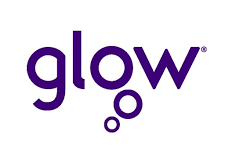
Thank you for registering
Not received your email, forgotten password.

The Covid-19 pandemic and resulting restrictions had a profound effect on all our lives, particularly impacting on our children and young people’s mental health and wellbeing. Research and experience tell us that creative learning across the curriculum and the development of creativity skills lead to improved wellbeing, confident learners and teachers, and a wider sense of achievement. This is reflected in the refreshed vision of the national Creative Learning Plan ; ‘to ensure the Scottish education system enables everyone to recognise, develop and apply their creativity to ensure they thrive in an increasingly complex and fast-changing world’ .
This week of events provided a platform for practitioners, learners and partners to celebrat e and share inspiring stories of creativity, innovation, collaboration and empowerment that became a silver lining of the pandemic and are helping learners to thrive.
Also see (below):
Follow-up from Sessions
Events programme.
| 10:00 - 11:30 | Keynote: , Strategic Director of Education, Skills, and Culture, City of London. | |
| 11:45 - 12:45 | Jean Laird, Stepping Stones Development Officer, and Hollie Simpson, Kinross High School | This session is suitable for teachers interested in professional growth and developing creative learning and teaching. There will be a focus on exploring one early career teachers’ enquiring approaches and experiences. Reference will also be made to The Professional Standards and the Creativity in Learning and Teaching Professional Guide. |
| 13:00 - 14:00 | Elizabeth McGuire and Nicola Crawford, , Education Scotland | This session will explore and exemplify how secondary schools and their partners have developed and delivered a creative curriculum offer through the pandemic. |
| 14:15 - 15:30 | Mahri Reilly and Ryan Hay, | This participatory workshop is a gentle space for personal reflection. A space where you are invited to identify your own wellbeing needs, the things you want to change, and the steps you can take to make the change. |
| 15:45 - 17:00 | Helena Good, Katie Simpson, Philippa Drummond, and Lucy Eades, | Create a new wellness area in your school. What does it look like and how would you activate the area? |
Back to top
| 10:00 - 11:15 | Simon Sharkey, Director, | You will be given access to a global network of creative outputs, exercises and ideas that enhance your teaching of the complex and emotional responses that children experience when being learning about or being exposed to the existential threat of climate change. |
| 11:30 - 12:30 | Learners from , Orkney | Thinking about belonging at Dounby Primary School - Exploring the meaning of belonging to a school community and why it matters. Utilising creative leadership approaches to build ownership and community. |
| 14:00 - 15:00 | Laura Frood and Co-Researchers from | This creative participatory digital workshop will be led by care-experienced young people from the Articulate Cultural Trust in Scotland who have been working with The Verbatim Formula research team. Celebrate your brain creatively. Share your experiences of barriers and challenges in learning and life. We invite you to join the cradle. |
| 16:00 - 17:00 | Community | Join Creative Partners and Education settings who are working together to develop learners’ creativity skills and improve wellbeing through the Creative Wellbeing Fund. Hear from participants on the challenges, highlights and learning each project is experiencing. Be inspired to embark on your own creative collaborative journey. |
| 17:15 - 18:15 | Rosie Reid and Louise Hamilton, and | Firstly, we will look at the journey of the ongoing partnership between Vox Liminis and Glasgow CREATE. We will share learning and reflections from The Trial of Rex Redford and offer the The Trial of Rex Redford project to new educational communities. This session aims to engage educators into a dialogue about the potential of creativity to explore social issues such as crime and punishment. |
| 16:00 - 17:00 | Orkney and Stirling Creative Learning Networks in partnership with National Galleries Scotland – | Explore practical ideas for use in class to develop creativity skills through the visual arts. Orkney and Stirling Creative Learning Networks in partnership with National Galleries of Scotland will describe recent partnership work and resources available to support you. Aimed at primary and secondary teachers. |
| 17:00 - 18:00 | Graeme Wallace and Leigh Watson, Curriculum Innovation Team, Education Scotland | We will share two examples of curriculum design to promote wellbeing and use these as provocations for discussion. Participants will exchange ideas and thinking on how curriculum design can empower young people to be responsible for their own wellbeing. |
| 10:00 - 11:30 | Linda Lees and Charlotte Bennett, City of Edinburgh Council | |
| 14:00 - 15:30 | Keynote: , educator, practitioner, trainer and author | In this session we’ll explore how to make learning matter for young people and how by thinking about five key principles – coherence, content, creativity, compassion and community – we can embed meaningful and agentive learning for all. |
| 16:00 - 17:00 | Stuart McIntyre, , West Lothian Creative Learning Network | Explore (and question) a detailed example of an exciting way in which practitioners have made space for creativity in their classrooms / settings / curriculum. |
| 10:00 - 11:30 |
| A conversation with the National Creative Learning Network on creativity and wellbeing through the lens of the refreshed Creative Learning Plan goals: Collaborate, Empower, Embed. Join local authority Creative Learning leads for facilitated, meaningful discussion around what this looks like within our practice. |
| 11:45 - 13:00 | Emily Reid, Artistic Director and Saffron Gillies, Drama Artist, | This event showcases two creative learning projects by Eco Drama - ‘Future Calling’, a digital arts and climate change project delivered with secondary pupils during lockdown, and arts-based outdoor learning project ‘Out to Play’. The session highlights the rich possibilities of creative learning through presentation, practical ideas and discussion. |
PDF file: Scotland’s Creative Learning Plan – Refreshed Creative Learning Plan High-level messages slide pack (635 KB)
Stimulating new approaches to learning and teaching through partnerships between education and cultural sectors
PDF file: A Collaboration for Creativity – Creative Scotland and Education Scotland – Action Plan 2021-22 (141 KB)
YouTube playlist of sessions recordings.
PDF file: Fusion: The role of creativity on flourishing and wellbeing - 28/03/22 (3.6 MB)
PDF file: Creativity and professional growth - GTCS - 28/03/22 (1 MB)
PDF file: Acrylicize/daydream believers - 28/03/22 (5.5 MB)
PDF file: Placing creativity at the heart of education - 28/03/22 (5.5 MB)
PDF file: The Conference of the Birds - 29/03/22 (2 MB) No modification allowed
PDF file: The Trial of Rex Redford booklet - 29/03/22 (598 KB)
PDF file: The Trial of Rex Redford slides - 29/03/22 (2 MB)
PDF file: The Secret Creativity Service - Teacher's resource - 29/03/22 (1.2 KB)
Padlet - Cradle of Learning – Articulate Cultural Trust - 29/03/22
PDF file: CLN presentation - 30/03/22 (548 KB)
PDF file: Junior curators - 30/03/22 (3.8 MB)
PDF file: What does creative arts learning look, feel, sound like - 30/03/22 (528 KB)
PDF file: Your art world - 30/03/22 (1.7 MB)
PDF file: Curriculum Design: understanding the learners - 30/03/22 (1.6 MB)
PDF file: Learner Led Consultation - 31/03/22 (7 MB)
PDF file: Making Space for Creativity to Happen - 31/03/22 (3.7 MB)
PDF file: Conversation with National Creative Learning Network - 01/04/22 (1.6 MB)
PDF file: Eco Drama - slides - 01/04/22 (3.7 MB)
PDF file: Eco Drama - Let's go out to play - 01/04/22 (3.4 MB)
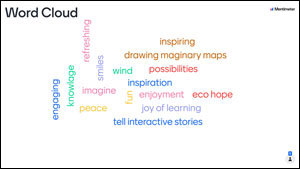
Creative Bravery Festival - Celebrating acts of bravery to help transform and rethink the way we educate.
The Creativity Portal - stimulating new approaches to learning and teaching through partnerships between education and cultural sectors.
Creativity resources - National Improvement Hub.
Creative Learning on Pinterest
Daydream Believers gives pupils access to 'real world' experiences through free online resources created by industry experts to help them develop essential skills.
HundrED is a global education non profit organisation whose mission is to help improve education through impactful innovations.
IDL Thought Paper , Education Scotland, NoTosh and a Co-Design team from across Scotland.
Safe Face to Face Working by Cultural Practitioners During Covid-19 Restrictions - Eight Case Studies, Arts in Education Recovery Group.
YouTube video: School of the (Im)Possible
The Conference of the Birds
UNBOXED – A UK wide ground-breaking celebration of creativity taking place in 2022.

Share this resource:
We use cookies to ensure that we give you the best experience on our website. If you continue to use this website, we'll assume that you are happy to receive these cookies. Accept and Close Find out more about cookies.

- China Daily PDF
- China Daily E-paper
- Cross-Strait
- Cover Story
- Environment

Creative education hub in the making

Hong Kong Baptist University's new campus in Kowloon Tong, which will begin partial operations in the latter half of this year, is set to become a leading landmark in creative education, representing a new model of living-learning communities of the future.
And, to deal with the challenge of limited campus space, university President Alexander Wai Ping-kong has proposed relocating the entire campus to the planned university town in the Northern Metropolis, or other areas with ample land and comprehensive supporting facilities.
The total area of HKBU's existing campus is 12.88 hectares - the smallest among the city's eight government-funded tertiary education institutions. To broaden the space, it has built the Jockey Club Campus of Creativity, which covers an area of 7,430 square meters.
The new campus is a vertically configured on Renfrew Road. It will have four blocks of residential colleges, providing 1,726 hostel places and doubling the number of residential places for students.
Besides dormitories, the campus provides about 5,000 sq m of academic space, including a creative hub equipped with state-of-the-art facilities for music, filming, television, video games and other creative disciplines.
The hub will provide teaching, learning and research space for the university's Department of Music and the Creative Media and Practice Cluster, such as large-scale music recording studios and postproduction cinemas, along with an immersive facility called White Box Experimental Space, for scientific and artistic research - the first of its kind in Asia.
Wai notes that the scarcity of land in Hong Kong has led to many students having to reside outside the campus. Drawing from his own experience as a student in the HKSAR, he says long and tiring daily commuting is difficult to overcome, which not only affects students' campus life, but also hinders their participation in social activities.
The new campus, adopting a new pattern of living-learning communities, will have dormitories and study spaces in the same building. Such a design makes the dormitories closely connected to the teaching area, reducing students' commuting time. It's aimed at encouraging them to integrate more deeply into the campus environment, dismantling the boundary between traditional campus life and the learning atmosphere, says Wai.
He says the cost of land in Kowloon Tong District is relatively high, and the elongated layout of the existing campus hinders educational activities. The school will continue to try overcoming the restrictions to achieve greater development.
The Northern Metropolis University Town - seen as a potential site for HKBU's future campus - was proposed by Chief Executive John Lee Ka-chiu in his Policy Address last year. The government has reserved 60 hectares to develop the town scattered in three locations in North District. The project is to encourage post-secondary institutions to strengthen cooperation with renowned Chinese mainland and overseas institutions. So far, 19 tertiary institutions have expressed interest in joining the project.
- Work suspended, fishing boats recalled as south China braces for Typhoon Yagi
- Full text: Toast by Chinese President Xi Jinping at welcoming banquet of 2024 FOCAC summit
- China issues red alert for typhoon Yagi
- China registers double-digit drop in mine accidents
- China records drop in production safety accidents
- Chinese, Cameroonian presidents announce elevation of bilateral ties

Proud to be named a 2024 Colorado Company to Watch! LEARN MORE!
- Resource Center
- ESSER Funding
- ESSER Funding Webinar
- Customer Sign In
- Customer Support
- Visit a Lab

Learning is different here.
Turnkey PBL-centered STEM learning environments and curricula that prepare students for the careers of tomorrow
5 key components engage students and accelerate learning.
Student achievement begins with engagement., inspire students with stem exploration and project-based learning..
Engaged students are more focused in class, have fewer disciplinary issues, build stronger critical-thinking skills, and authentically connect to their learning. SmartLab environments and curriculum are designed to involve all students in learning that builds skills for college and the careers of the future.

Standards-Aligned STEM Curriculum
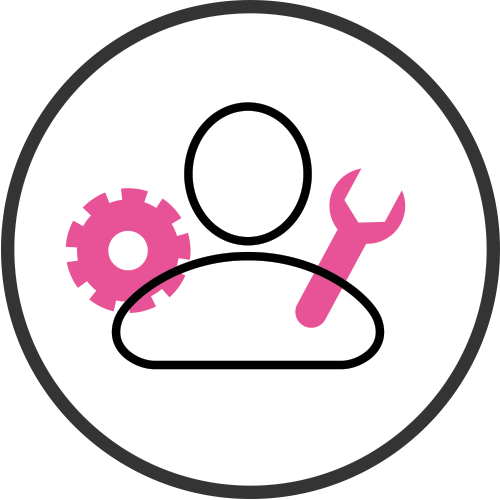
Student-Led Project Based Learning
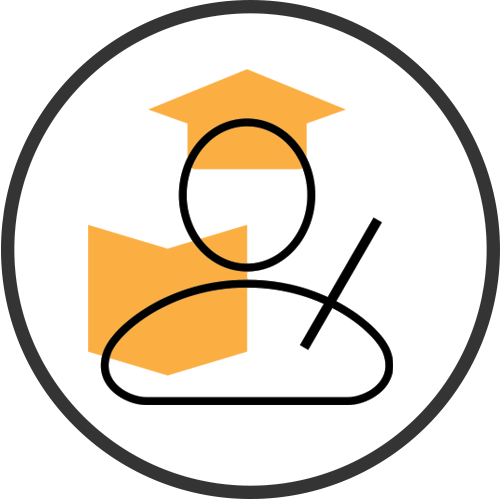
College and Career Readiness
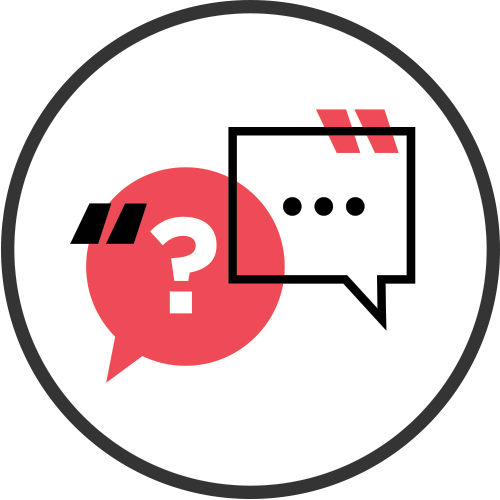
Authentic Student Engagement
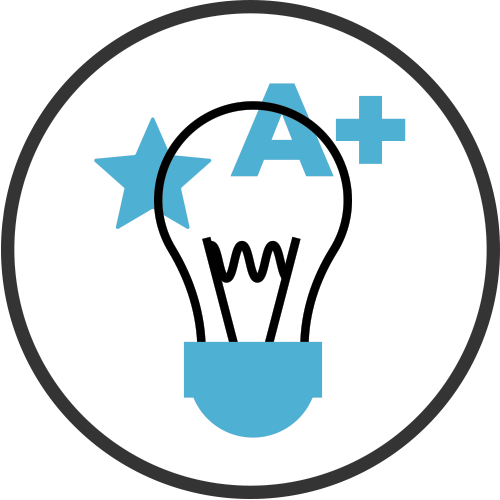
Accelerated Learning
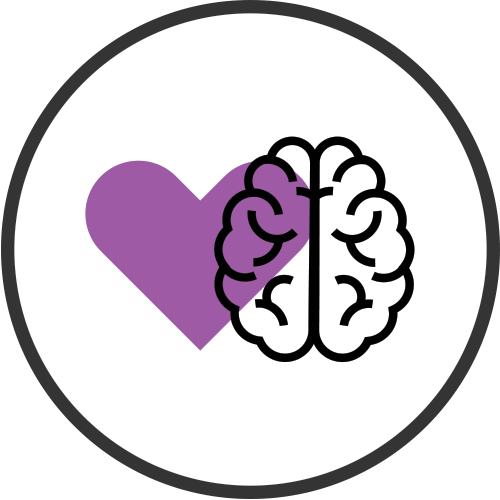
Social-Emotional Learning

Essential Life and Leadership Skills

Equitable STEM Access
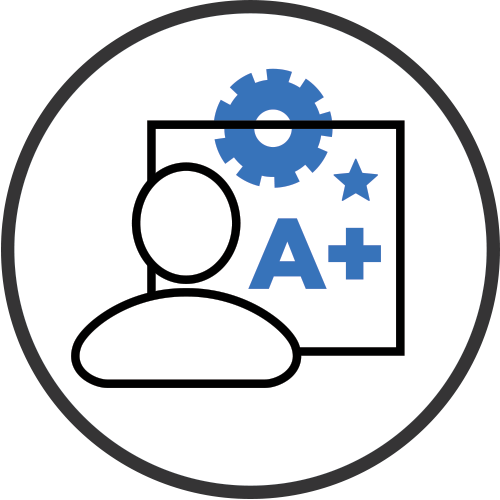
Personalized Learning
Watch the transformation.
SmartLabs add powerful PBL-centered STEM functionality to new and existing spaces.
Our Lady of Perpetual Help | Chattanooga, TN
Our impact across the USA.
We bring comprehensive, project-based STEM learning to classrooms across the country.
Students Served
Technologies for K-12
Project Starters
Areas of STEM Exploration
What’s inside a SmartLab?
There are many parts to each SmartLab and some are customized just for you.
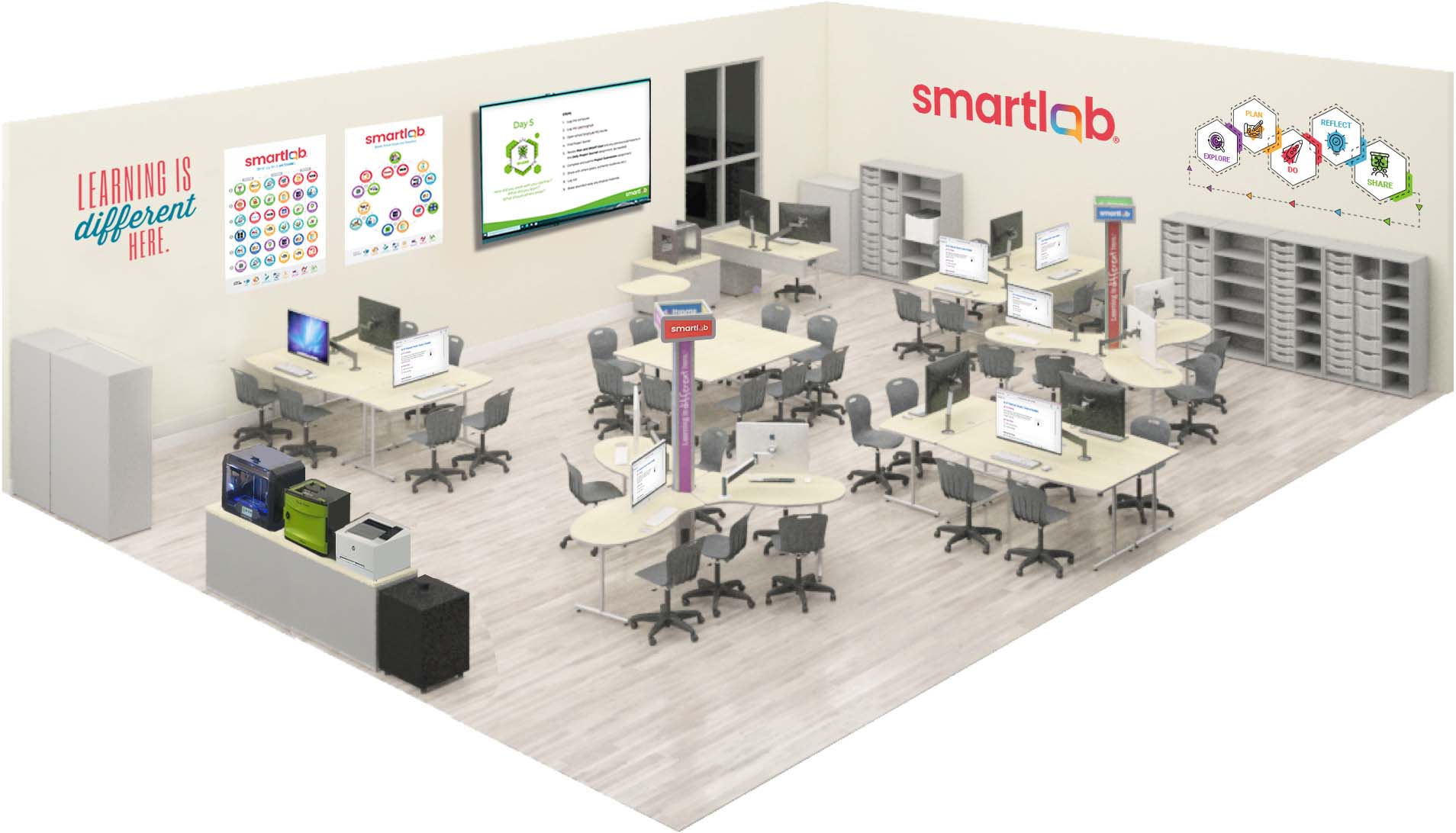
Inspiring educators and students alike.

District Administration’s Top EdTech Products of 2024 Award
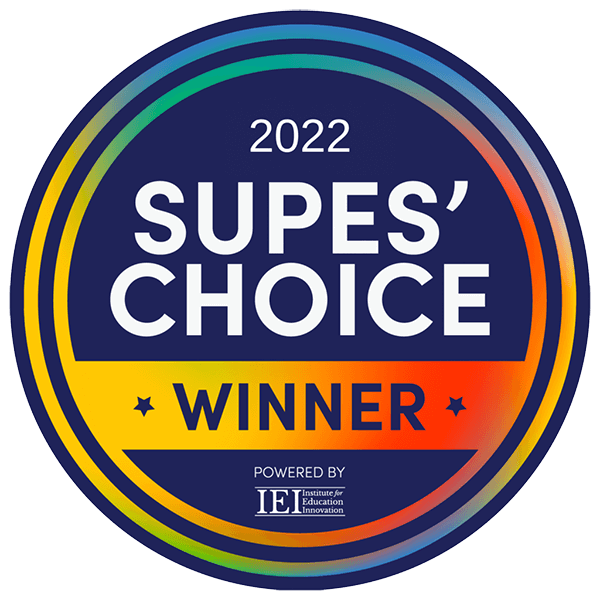
2022 STEM/STEAM Instructional Solution of the Year
Client success stories.
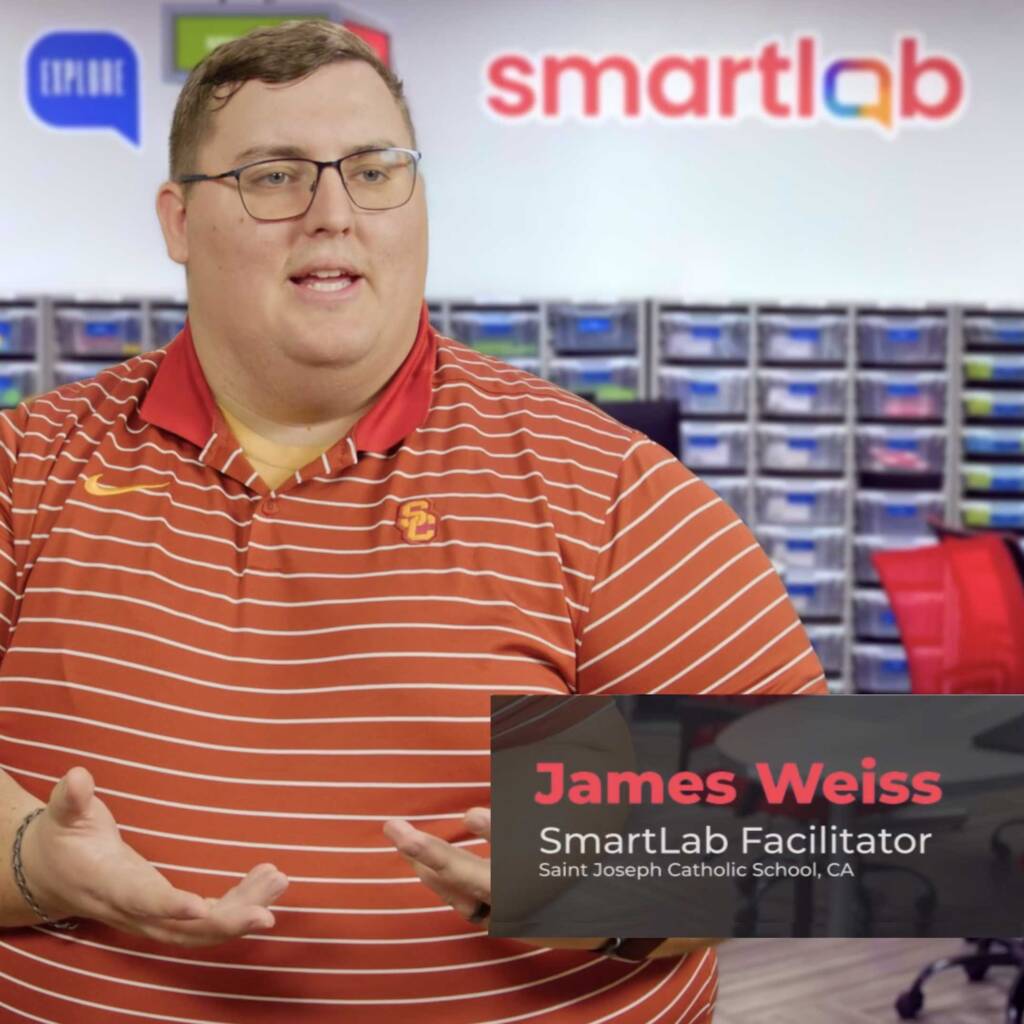
The Benefits of SmartLab: Learning Is Different Here
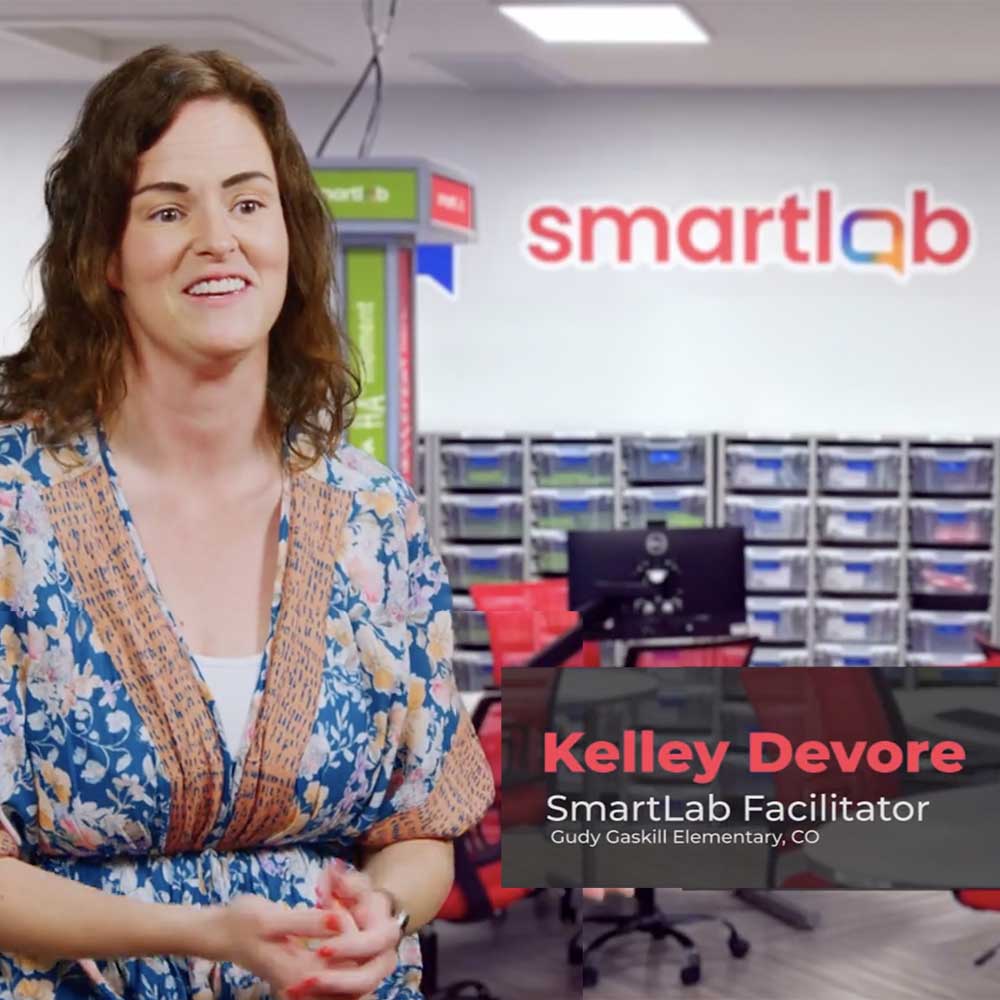
Educators Talk About SmartLab: Learning Is Different Here
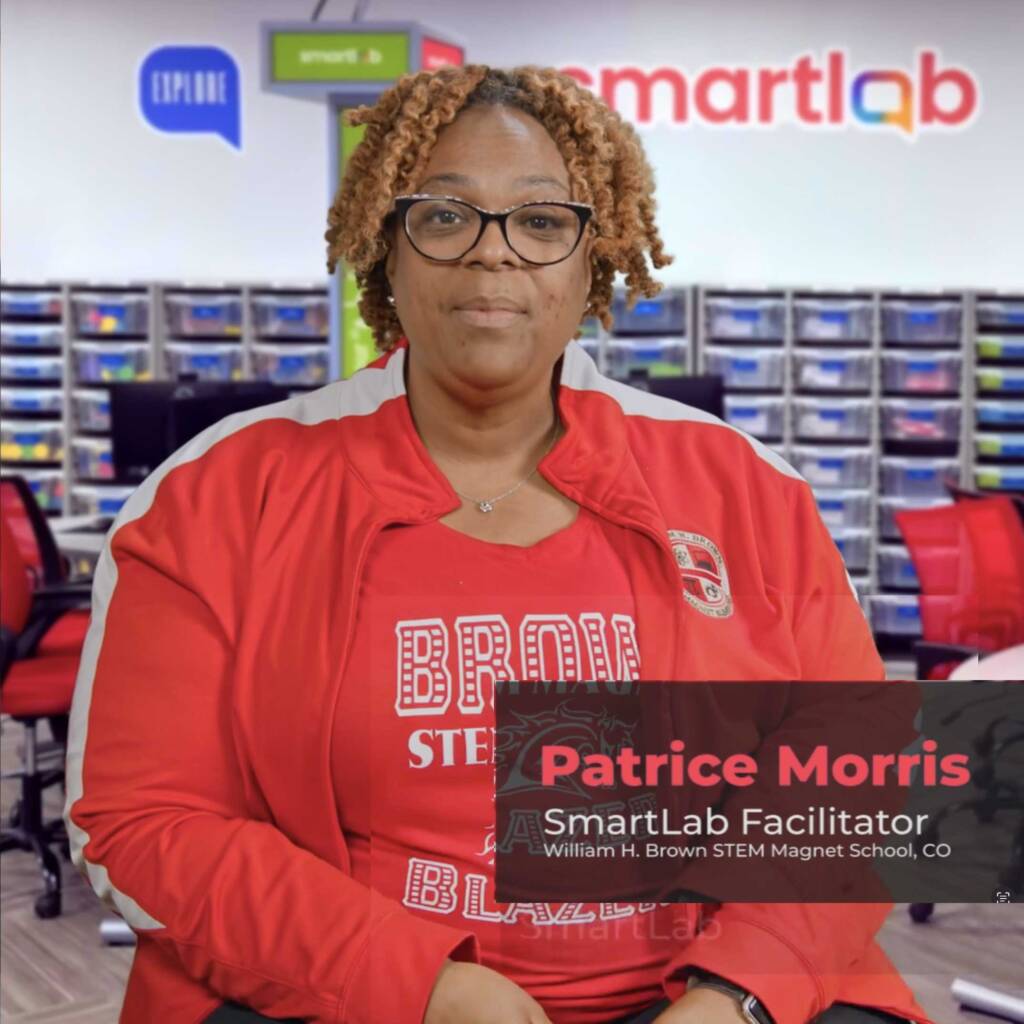
How Educators Feel About SmartLab
Ready to start planning your SmartLab?
We’re excited to hear from you. Let’s change the way your learners engage with math and science–in and outside the classroom.
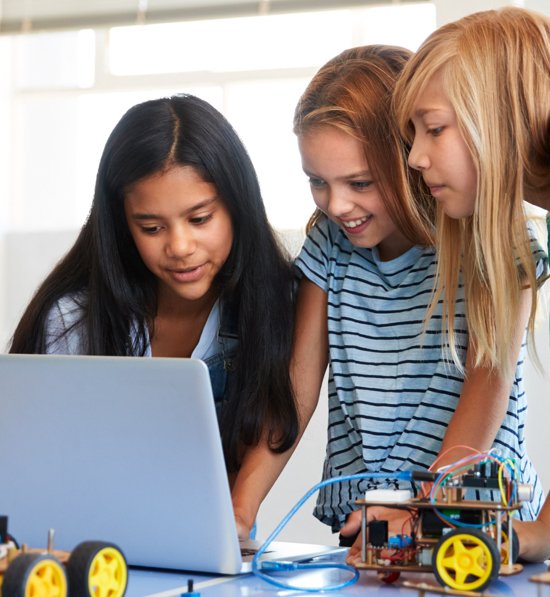

We are a global research partnership Our goal is to empower people by giving them the evidence they need to make decisions about technology in education
Yaw Niel/Shutterstock.com

Our topic areas for evidence
We are uniquely positioned to deliver evidence around these key areas of impact in EdTech
Country focus
We work directly with governments and partners in seven countries
Sierra Leone
Algorithmic design in edtech.
Investigating adaptivity for learners and teachers in a digital personalised learning tool in Kenya
Latest evidence
Remote supervision options for school quality assurance officers: recommendations for a cost-effective and rapid develop-and-test process, mewaka national teacher development reform in tanzania: design-based implementation research, teacher retention and mobility in sierra leone: what factors motivate teachers to stay at or leave schools, edtech hub research portfolio: addressing some of the most pressing topics in education technology today, are you a decision-maker working with edtech, we challenge you to become obsessed with asking and finding answers to these five questions, in order to achieve an evidence-driven future., edtech news.

Researching with teachers with disabilities in Tanzania: Adaptations and observations

EdTech for Smartphones: Building Teacher Capacity in Low-resource Environments

Literacy for all: How using television can create a more inclusive learning environment in Kenya

Learning in the Post-COVID Era: What Makes Us Build Back Better

Unlocking Literacy: Navigating Parental Engagement with Worldreader’s BookSmart in Kenya

Utafiti Elimu Tanzania: Bridging Research and Policy in Tanzanian Education
Privacy overview.
| Cookie | Duration | Description |
|---|---|---|
| cookielawinfo-checkbox-analytics | 11 months | This cookie is set by GDPR Cookie Consent plugin. The cookie is used to store the user consent for the cookies in the category "Analytics". |
| cookielawinfo-checkbox-functional | 11 months | The cookie is set by GDPR cookie consent to record the user consent for the cookies in the category "Functional". |
| cookielawinfo-checkbox-necessary | 11 months | This cookie is set by GDPR Cookie Consent plugin. The cookies is used to store the user consent for the cookies in the category "Necessary". |
| cookielawinfo-checkbox-others | 11 months | This cookie is set by GDPR Cookie Consent plugin. The cookie is used to store the user consent for the cookies in the category "Other. |
| cookielawinfo-checkbox-performance | 11 months | This cookie is set by GDPR Cookie Consent plugin. The cookie is used to store the user consent for the cookies in the category "Performance". |
| viewed_cookie_policy | 11 months | The cookie is set by the GDPR Cookie Consent plugin and is used to store whether or not user has consented to the use of cookies. It does not store any personal data. |
Best Choice for Creatives
Adobe Creative Cloud for BYOD Students Free for all NSW Department of Education Students
Go from blank page to brilliant..
Creative Cloud gives you the entire collection of Adobe desktop and mobile apps, from essentials like Photoshop to innovative new tools like Experience Design. You also get built-in templates to jump start your designs and step-by-step tutorials to help you get up to speed quickly and sharpen your skills. It′s your entire creative world, all in one place.
An Adobe Creative Cloud membership gives students access to the latest and greatest industry standard Adobe creative software and other new applications as they are released. Students now get the freedom to create virtually anything they can imagine and are encouraged to think and act creatively with these amazing tools.
With the Adobe Creative Cloud, students have the power to :
- Design posters, logos and edit photos and videos like a professional
- Build websites without writing code and create web, mobile, and tablet apps with HTML5
- Create a polished portfolio and make sensational presentations and reports
- Become more interested in discovering things for themselves and be better equipped to work well with others
- Be more open to new ideas and challenges and have the ability to solve problems
- Become more efficient learners and show greater ownership of their learning
What do we get in our free Adobe CC Deal?
If you are a student of the NSW Department of Education you can install the whole of the Creative Cloud for free. This includes:
- All desktop apps - Yep, all the Photoshop, Premiere Pro, After Effects that you could possibly want
- All mobile apps - you can start creating on your phone, then finish on your laptop or desktop. Turn your phone into a multimedia studio
- Access to all Creative Cloud tutorials
- Access to Adobe My Portfolio so you can create your own digital portfolio and showcase your work for the future
As part of the NSW Department of Education Adobe BYOD Students package you also have access to install and use the following Adobe software.
- Adobe Presenter
- Adobe Captivate
- Adobe Photoshop Elements
- Adobe Premiere Elements
And don't forget you all have access to Adobe Spark - Post, Page and Web too! Just sign in with your department email ending in @education.nsw.gov.au
How do we install the Creative Cloud and APps?
The Adobe Creative Cloud is like a bucket that you firstly install, then you install each individual desktop app as you need. If you just want Photoshop and Illustrator, that's all you need to install. No more big downloads and installations.
- Go to the Student BYOD Software Hub
- Register using your @education.nsw.gov.au student email
- Choose Adobe CC and click through the checkout process
- Check your school emails for confirmation and link to 'redeem' your code or go back to your account in the BYOD Student Hub
- Copy your redemption code
- Click on 'Redeem your code'
- Paste the redemption code in the space provided
- Follow the link and install the Adobe Creative Cloud Applications Manager
- Now you can install the desktops apps you wish.
- On your mobile, install Adobe mobile apps as you wish and log in using your Adobe account (that you made with @education.nsw.gov.au email)
Some points to note:
- Adobe Creative Cloud file storage is not part of this deal.
- Existing CS 6 installations will expire on December 1st, 2016. You will need to uninstall this software, register for a redemption code, then install the CC Desktops apps as needed.
What about teachers? Do they get free software too?
Under the Work at Home software agreement, NSW Department of Education staff with an @det.nsw.edu.au get the full Adobe Creative Cloud desktop and mobile app environment for $12.25 AUD per year. This is an amazing deal!
To get their Adobe CC package sorted teachers should login to the On The Hub site using their Department email ending in @det.nsw.edu.au and then follow the straps as per students above.
Made with Adobe Slate
Make your words and images move.
Your report has been submitted.
There was a problem submitting your report. Please contact Adobe Support .
Report Abuse
If you feel that this video content violates the Adobe Terms of Use , you may report this content by filling out this quick form.
- Trademark Infringement
- Offensive Content
- Racist or Hate Content
- Sexually Explicit Content
- Please provide a description of your concern.
To report a Copyright Violation, please follow Section 17 in the Terms of Use .
Cooler Master MasterHUB review: A modular control panel for creative professionals

Your changes have been saved
Email is sent
Email has already been sent
Please verify your email address.
You’ve reached your account maximum for followed topics.
From high-quality coolers to powerful PSUs and gorgeous cases, Cooler Master is a well-known peripherals manufacturer in the PC space. However, the company’s latest invention is quite different from its previous offerings. Designed for streamers and image/video editors, the MasterHUB is a modular macro pad similar to Elgato’s Stream Deck Neo , though it packs tons of modules and features compared to its rival.
For example, the MasterHUB consists of a magnetic FlexBase where you can attach additional modules like knobs, sliders, and buttons with IPS displays. This lets you swap out the components and mix-match them per your needs. Plus, with a multitude of pogo pin connectors scattered throughout the base, you can fix the modules in different orientations.
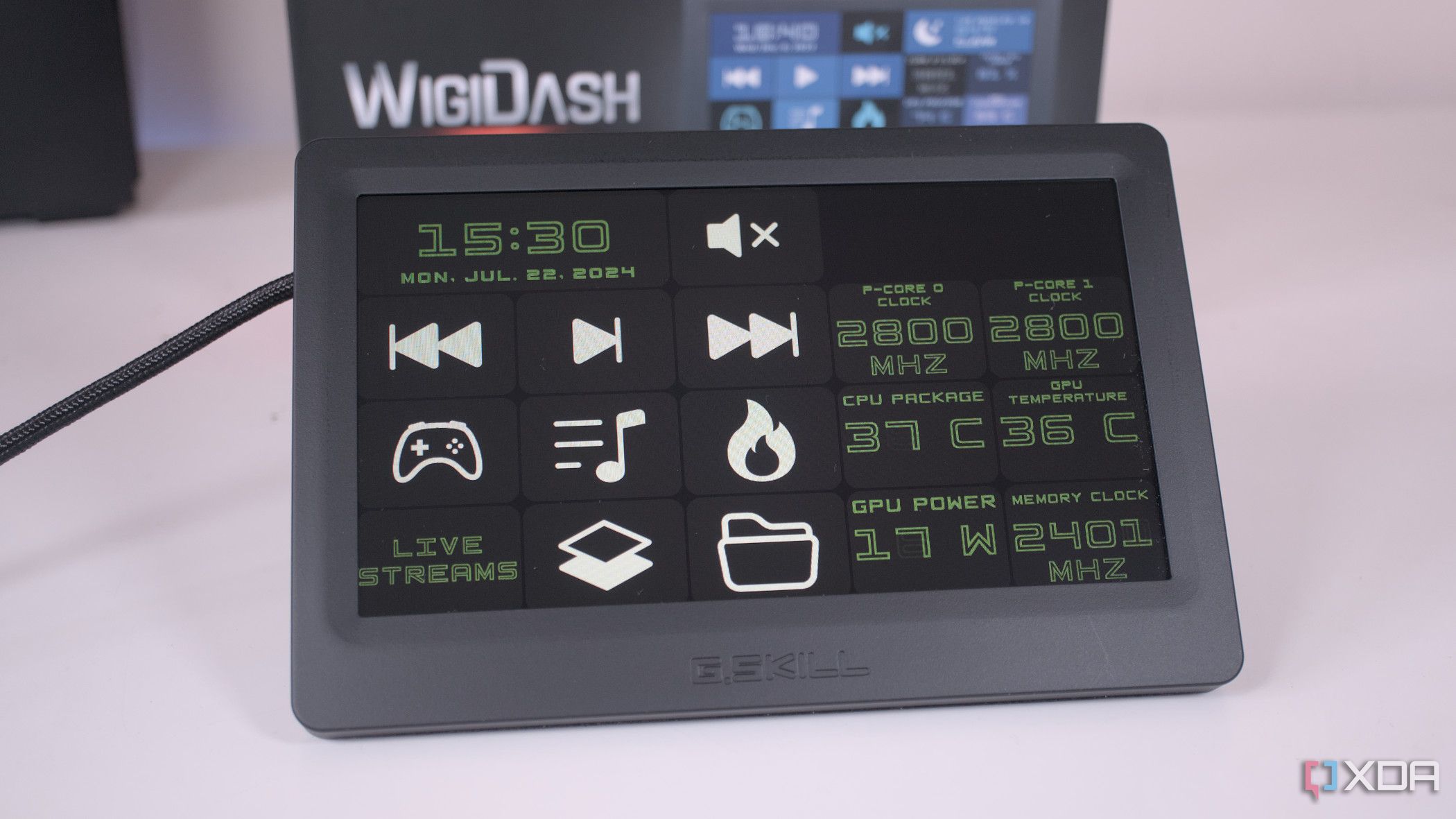
G.Skill WigiDash review: A stunning way to control a Twitch stream and display vital PC stats
Quickly check vital PC stats without lifting a finger.
Having tested the MasterHUB for well over a week, I can confidently say that it makes for a solid addition to any content creator’s workspace.
About this review: Cooler Master sent me the Pro Kit version of the MasterHUB. However, the company had no input into this review. Nor did it see the contents of the article before publishing.
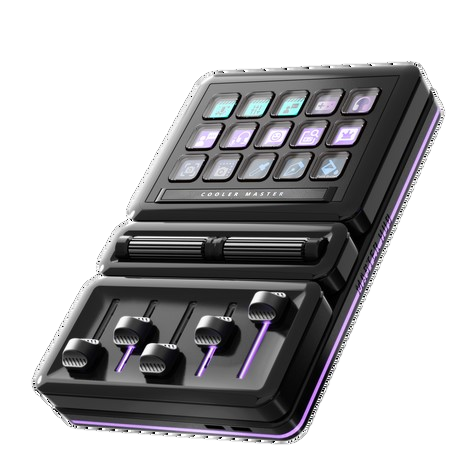
Cooler Master MasterHUB
Enough buttons and switches for all your creative needs
The MasterHUB is a one-of-a-kind control panel that lets you cycle between multiple components to suit your content creation needs. Depending on the particular version, you can get as many as five distinct modules for the MasterHUB, with each add-on bringing its own useful features to the table.
- Supports multiple hot-swappable modules
- Compatible with most content creation apps
- Easy-to-use companion app
- Not big enough to accommodate all components at the same time
- A tad too expensive
Pricing, specs, and availability
As of writing, the MasterHUB is only available on Kickstarter, with the company planning to ship the orders by October 2024. For the average buyer, the base model of the MasterHUB is priced at $399, though you can grab it at a discounted price of $299 for a limited time. The Starter Kit includes the FlexBase alongside a 15-button IPS display, a 2-roller module, and a triple-knob add-on. If you want more options, you can upgrade to the Pro Kit, which costs an additional $100 ($150 after the discount period ends) and brings two more components: a 1.3-inch IPS display and a 5-fader module. CoolerMaster also sells other add-ons for the MasterHUB, including a PLUS+ Stand and extra versions of each module.
What I like
A versatile design that lets you switch between different parts.
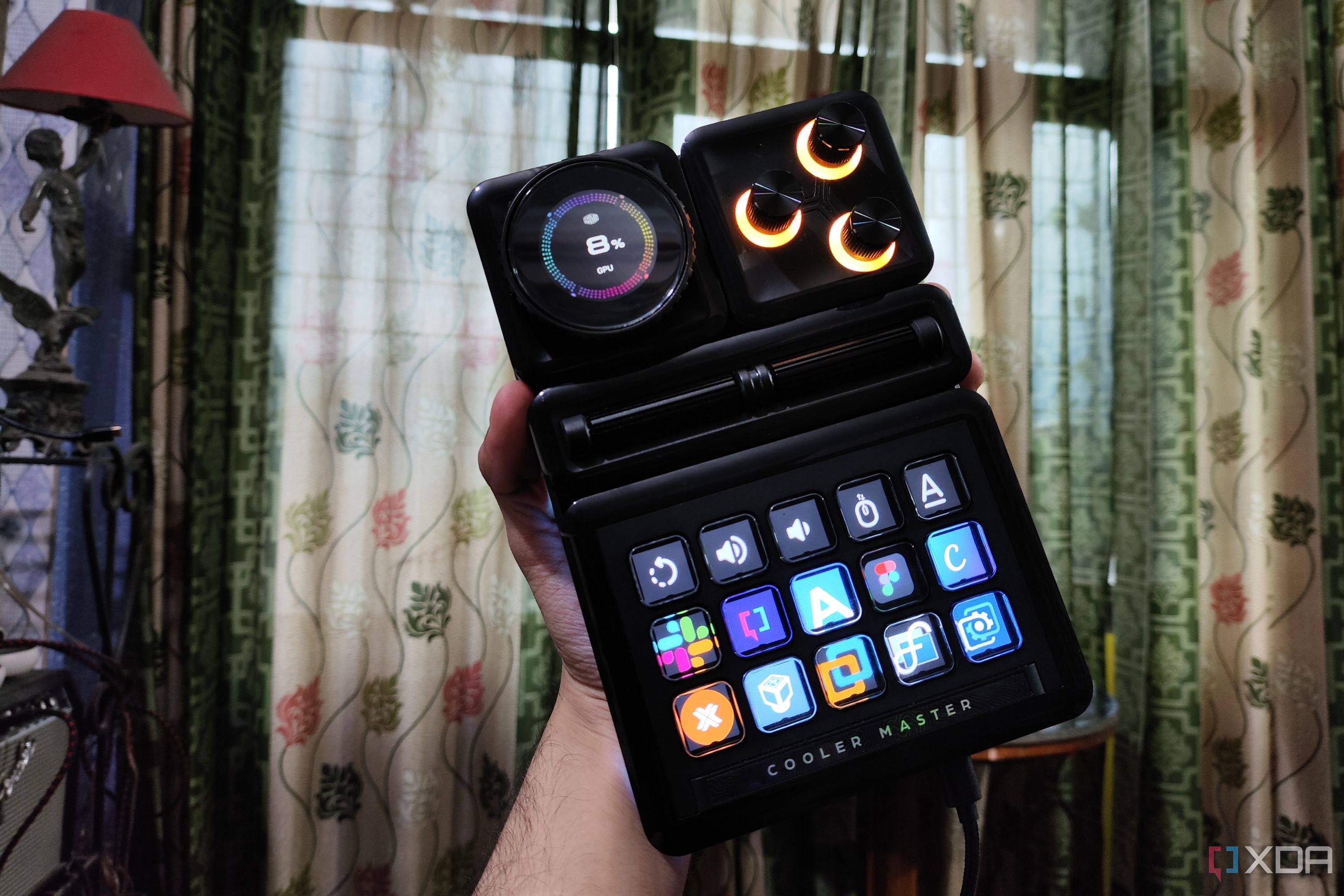
Unlike most macro pads and control panels that let you customize the software aspect of the device, the MasterHUB also lets you modify the hardware modules to your liking. At the core of the device is the FlexBase, which consists of multiple pogo pins that can supply power to any modules you attach to the MasterHUB.
Slotting the components is pretty simple: line the connector on each component with the pins on the FlexBase and let the magnets do the rest of the work.
Slotting the components is pretty simple: line the connector on each component with the pins on the FlexBase and let the magnets do the rest of the work. Of course, you’ll need to be a little strategic in the add-on placement if you want to attach multiple modules, especially the larger ones. Speaking of the components…
A solid array of modules
Since I received the Pro Kit variant, I've been able to test all the add-ons available for the MasterHUB – and let me tell you, each component has its own unique functions, including the rather unassuming 2-roller module. For example, the plate with the triple knobs is fantastic for image and video editing, and you can even map additional actions like tapping the knobs using the official MasterHUB app (which I’ll get to in a bit). Similarly, the 5-fader component is perfect for audio editing professionals, while the 1.3-inch display can be used to monitor your CPU/GPU temps when you're not turning the dial to switch desktops.
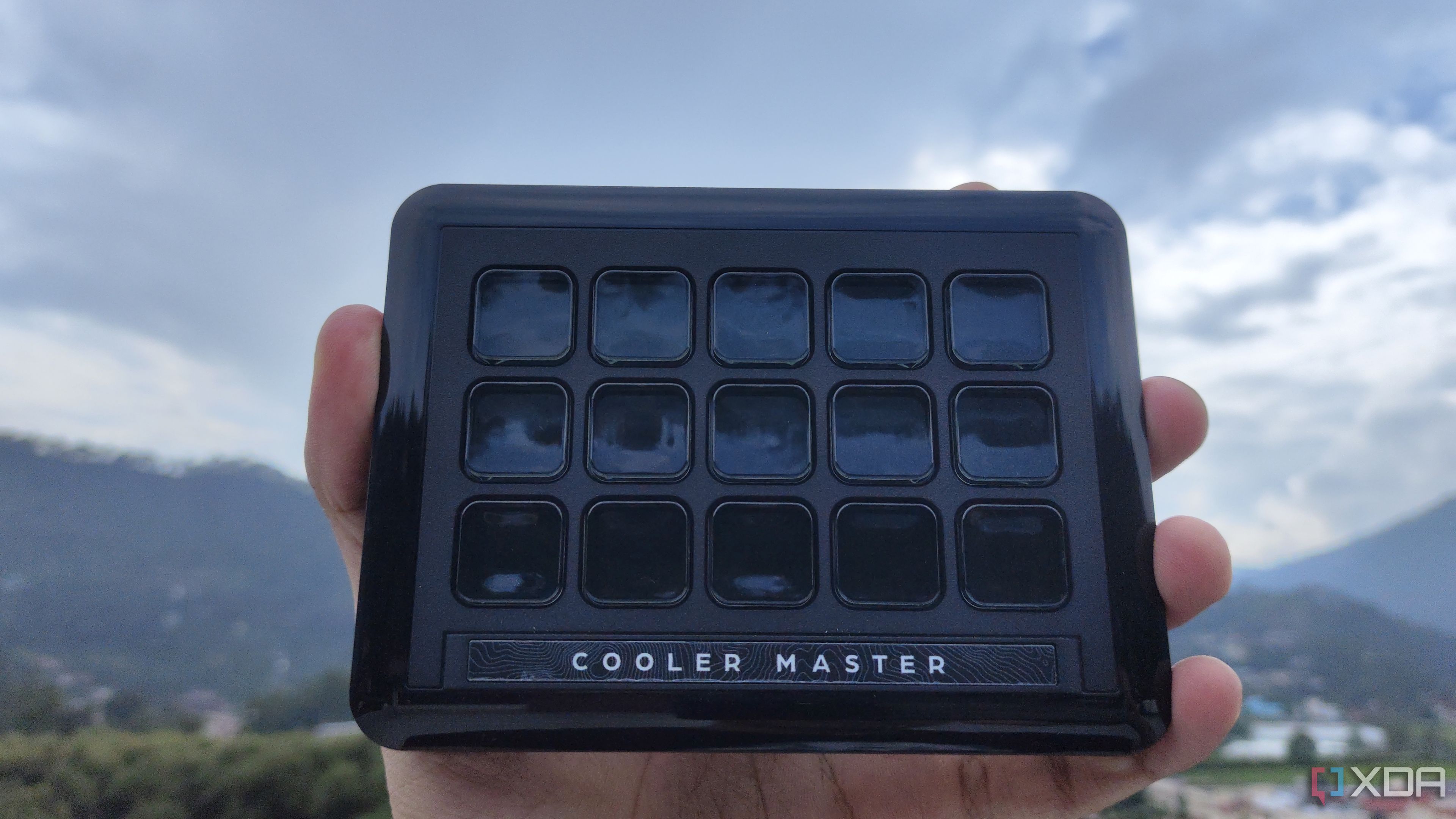
All that said, the 15-button display module is the real star of the show. Not only does it possess enough keys for all your content creation needs, but the module in question also features a vibrant IPS display instead of resorting to LCD screens. Functionality-wise, you can map any application, command, hot-key, or even app-specific actions to the 15-buttons. Since it’s a display, you can also set custom icons for each button. The MasterHUB application also lets you create up to five pages for different icons. Even if you were to sacrifice eight keys to cycle between different pages, you can still access a grand total of 67 key configs at once! As if that's not enough, you can even set GIF files as icons for the 15-key display to make your setup even more lively.
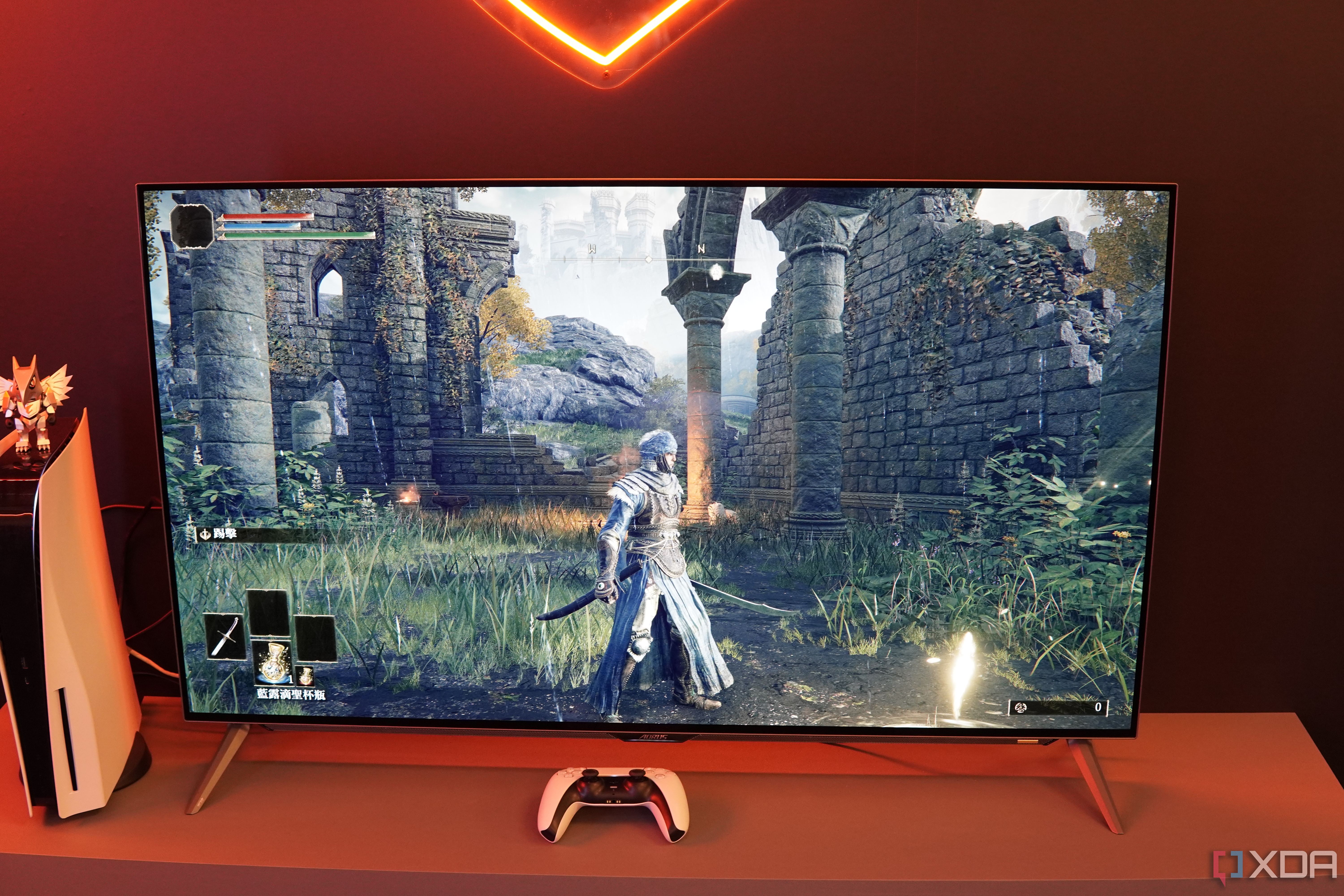
IPS vs. VA vs. TN vs. OLED: Which gaming monitor to buy?
Confused which type of gaming monitor to buy? Here's a simple breakdown of each panel technology to help you choose.
The 15-button display module is the real star of the show.
The software support is just as amazing
With a productivity-driven tool like the MasterHUB, the software aspect can make or break the product. And I’m happy to report that the control pad exceeded my expectations. The MasterHUB isn’t compatible with the existing Cooler Master app suite. Instead, the device requires its own dedicated application that, as of writing, isn’t available on Cooler Master’s website.
Nevertheless, the MasterHUB application has a simple UI and doesn't come with any bloatware services or unnecessary additions whatsoever. Inside the app, you’ll find a variety of options, ranging from RGB lighting settings to button mapping provisions. Since all components possess different sets of buttons, the application has a separate set of interactions for each module. Plus, you can create multiple profiles and switch between them at will.
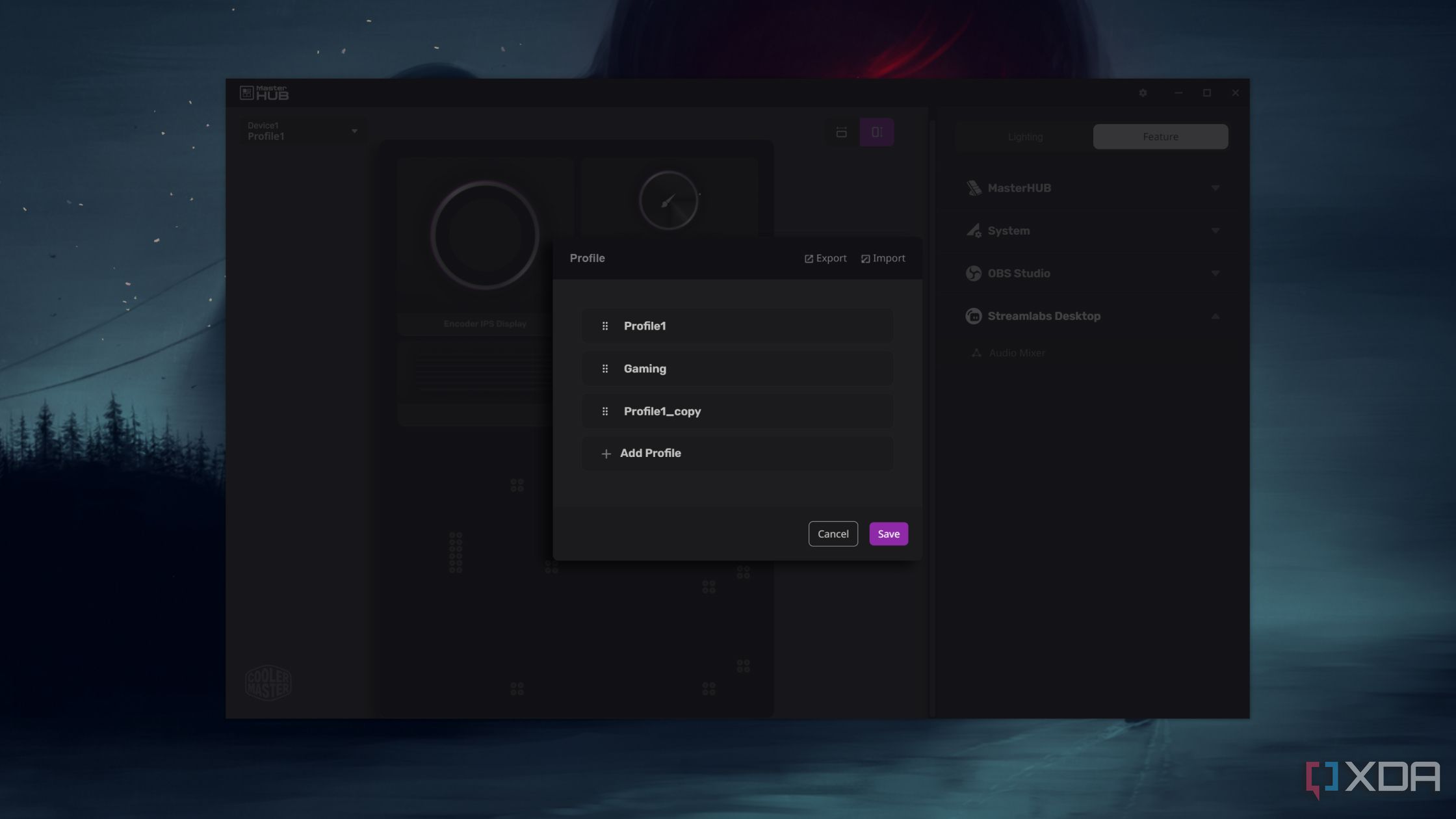
The MasterHUB application has a simple UI and doesn't come with any bloatware services or unnecessary additions whatsoever.
While we’re on the subject of mappable actions, the MasterHUB is compatible with a variety of third-party apps and tools, including OBS Studio , Photoshop , Illustrator, Premiere Pro, Twitch, and Streamlabs Desktop. So, you can link application-specific interactions like changing the brush sizes, opening chat, or starting a stream, directly from the MasterHUB control app.
What I don’t like
You can’t attach all modules on the masterhub at the same time.
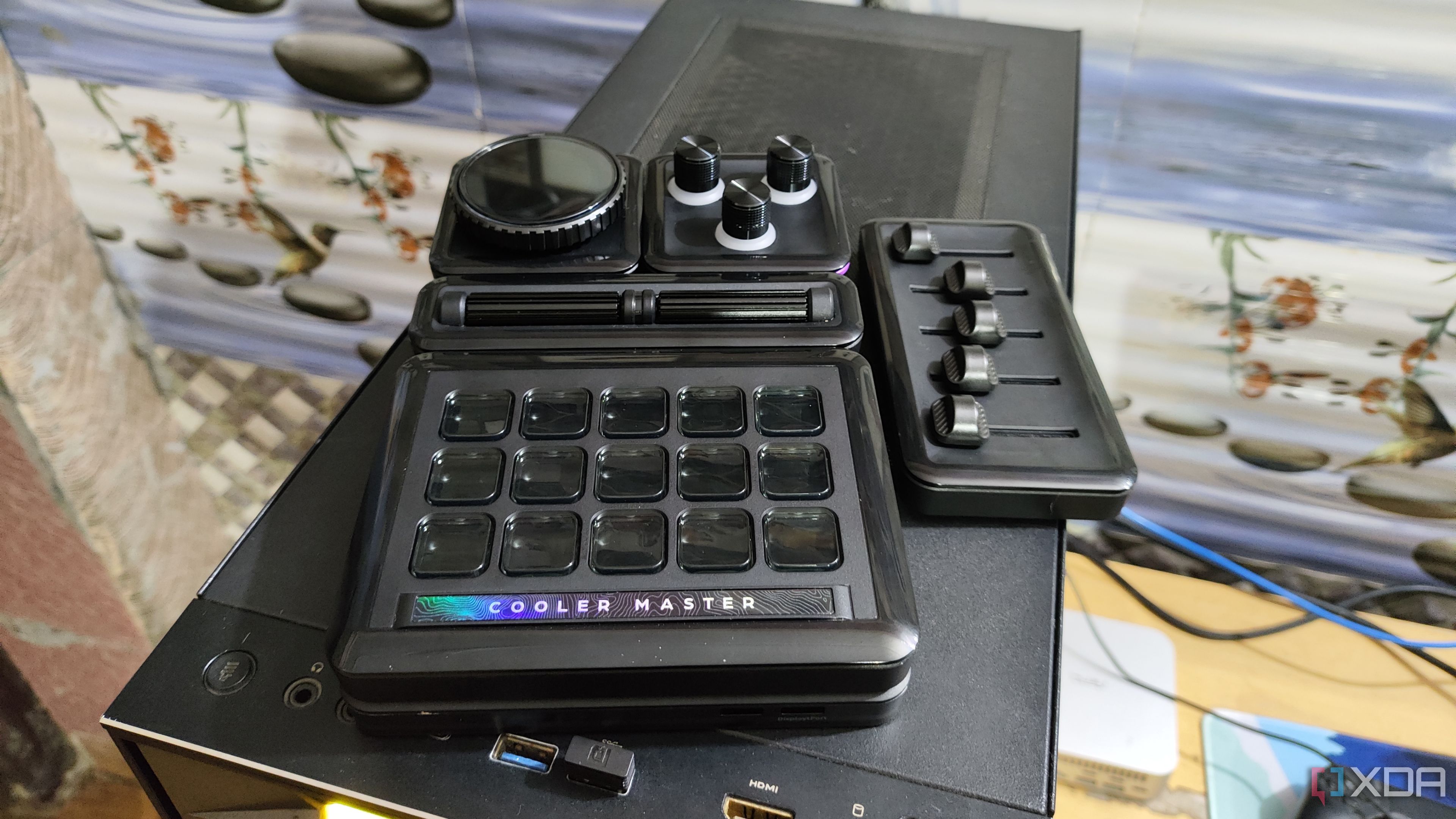
Despite the rich set of components that you can attach to the MasterHUB, the FlexBase just isn’t large enough to equip every module available in the Pro Kit version. Although Cooler Master claims it will release a bigger version of the main board in the future, it’s worth noting that you’ll have to leave at least one component out of the setup. With the MasterHUB allowing you to hot-swap each component, the lack of space isn’t a dealbreaker by any means. But I was disappointed that I couldn’t turn the MasterHUB into a full-on productivity warmachine armed with every module available for the device.
Should you buy the Cooler Master MasterHUB?
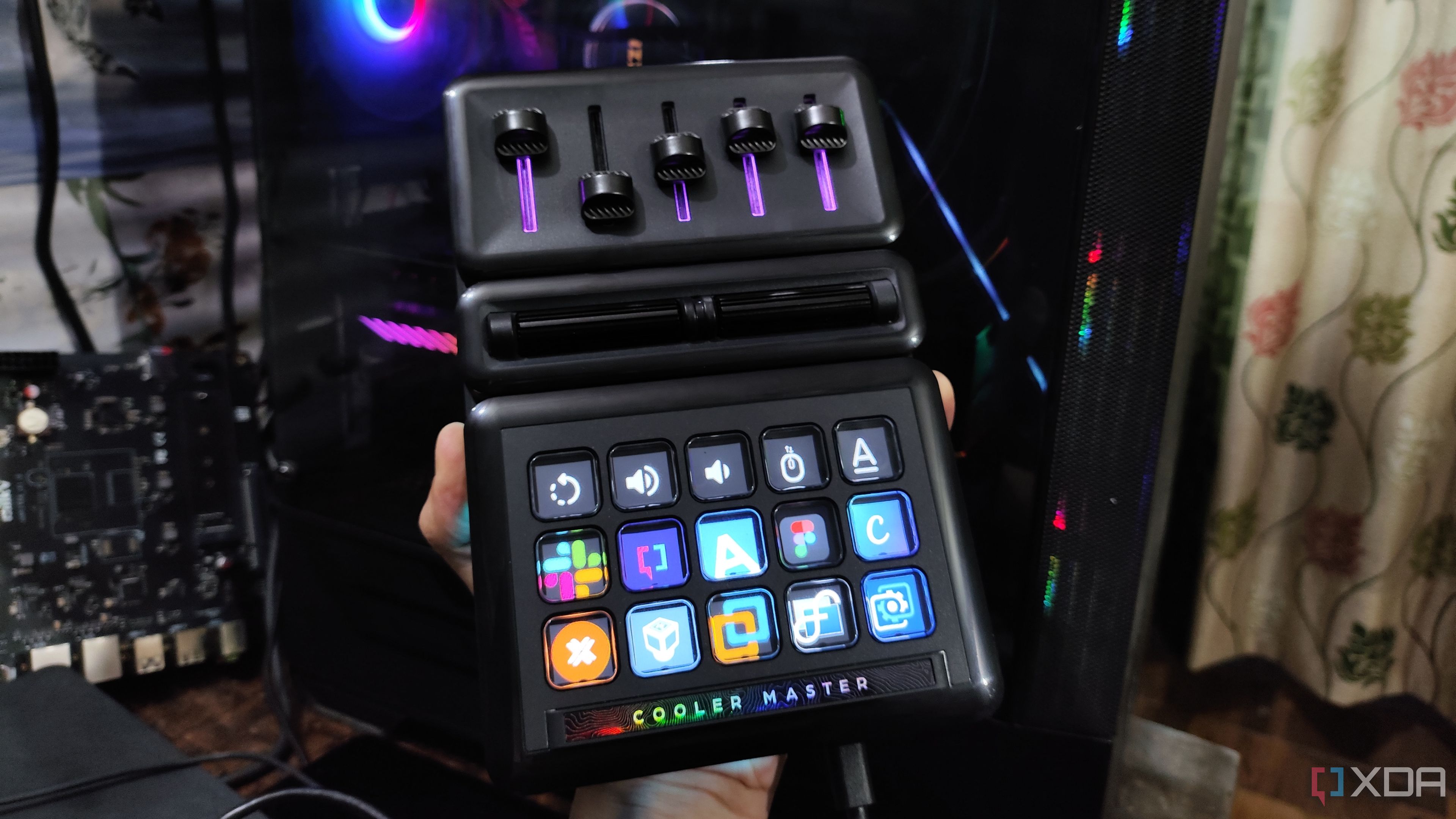
You won’t regret buying the MasterHUB if:
- You’re looking for a control panel that contains all the toggles, buttons, and knobs you’ll ever need for your productivity needs.
- You want a feature-laden macro pad that’s highly customizable.
You should stay away from the MasterHUB if:
- You don’t want to spend $250+ on a control pad.
- You need to have every module attached to the board at all times.
The MasterHUB is hands-down the most innovative stream deck alternative out there and has a lot of utility regardless of whether you’re an up-and-coming creator or a hardened creative professional. Heck, with the MasterHUB letting you add custom images to each hotkey, you can even use it in your favorite RPGs as an interactive action board featuring custom mapping and icons for all your spells and actions. Sure, it’s not the most expensive control panel on the market. But if you’re willing to shell out $299 on the MasterHUB, you won’t be disappointed with this feature-packed control panel!
- NAS, IOT, and everything else
- Cooler Master
Blog The Education Hub
https://educationhub.blog.gov.uk/2024/07/29/teacher-pay-everything-you-need-to-know-about-the-2024-pay-award/
Teacher pay: everything you need to know about the 2024 pay award
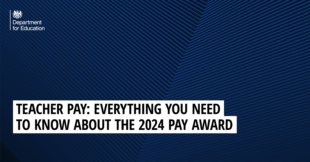
The Education Secretary has accepted the recommendations of the School Teachers’ Review Body (STRB) and confirmed the teacher pay award for 2024-25, setting out what school teachers in England can expect to be paid next academic year.
The STRB is an independent group that makes recommendations on the pay of teachers in maintained schools in England and reports to the Secretary of State for Education and the Prime Minister.
Each year the STRB recommends a pay award based on different factors including the economy, school workforce data and evidence from organisations including the DfE, and the teaching unions.
The government then considers the recommendations in depth and makes a decision on what pay award teachers receive for the coming year.
Here’s everything you need to know about teacher pay.
Are teachers getting a pay rise this year?
The STRB recommended a pay award of 5.5% and this has been accepted in full by the Education Secretary, reflecting the vital contribution teachers make to children’s life chances.
The 5.5% award would see pay packets increase by over £2,500 for the average classroom teacher, which would take the median salary for 2024/25 to over £49,000 a year.
Will teachers at all schools receive the pay award?
The pay award applies to maintained schools, with academies continuing to have freedom over their pay and conditions.
However, in practice most academies follow the recommendations of the STRB.
Is the pay award fully funded?
Yes. Schools will receive £1.1 billion in additional funding to cover their overall costs in financial year 2024-25, including fully funding the pay award for teachers at a national level.
This matches what we have calculated is needed to fully fund the teacher pay award and the support staff pay offer, at the national level, on top of the available headroom in schools’ existing budgets.
We are also providing an additional £97 million for schools delivering post-16 education (£63 million) and early years (£34 million) provision.
Taken together, this is an increase of almost £1.2 billion.
The pay award impacts both financial years 2024-25 and 2025-26. This additional funding only covers the financial year 2024-25 portion of the award. We will take into account the impact of the full year's costs of the teacher pay award on schools when considering 2025-26 budgets, which are yet to be agreed.
When will teachers receive their pay rise?
Teachers will start receiving their new salary in the autumn, after a new pay order is laid in Parliament and comes into force.
Pay will be backdated to 1 September 2024.
Will school support staff get a pay rise?
The teacher pay award only applies to school teachers, but the additional funding schools will receive also ensures schools are, at a national level, covered for the current 2024-25 pay offer for support staff, which is currently under negotiation.
Unlike teachers, most school support staff are currently employed on the pay and conditions of the National Joint Council (NJC) for Local Government Services. The NJC is a negotiating body made up of representatives from trade unions and local government employers.
We are committed to reinstating the School Support Staff Negotiating Body to give support staff like teaching assistants, caretakers and cleaners a stronger voice in government. The body will be tasked with establishing a national terms and conditions handbook, training, career progression routes, and fair pay rates for support staff.
What else are you doing to ensure teaching is an attractive profession?
Alongside the pay award, we have also announced that from September, schools will no longer be required to use the Performance Related Pay (PRP) system, which can lead to schools and teachers going through an overly bureaucratic process to agree individual teachers’ pay rises. This will help improve teacher workload.
We will also clarify that teachers can carry out their planning time at home, improving flexible working for staff.
You may also be interested in:
- What is the national curriculum and why is it being reviewed?
- The King’s Speech 2024: What does it mean for education?
- Letter to the education workforce from Education Secretary Bridget Phillipson
Tags: Chancellor , pay award , school teachers salary , schools , STRB , teacher pay , teacher pay award 2024 , teacher salary
Sharing and comments
Share this page, related content and links, about the education hub.
The Education Hub is a site for parents, pupils, education professionals and the media that captures all you need to know about the education system. You’ll find accessible, straightforward information on popular topics, Q&As, interviews, case studies, and more.
Please note that for media enquiries, journalists should call our central Newsdesk on 020 7783 8300. This media-only line operates from Monday to Friday, 8am to 7pm. Outside of these hours the number will divert to the duty media officer.
Members of the public should call our general enquiries line on 0370 000 2288.
Sign up and manage updates
Follow us on social media, search by date.
| M | T | W | T | F | S | S |
|---|---|---|---|---|---|---|
| 1 | 2 | 3 | 4 | 5 | 6 | 7 |
| 9 | 10 | 11 | 12 | 13 | 14 | |
| 15 | 16 | 17 | 20 | 21 | ||
| 22 | 23 | 24 | 25 | 27 | 28 | |
| 30 | 31 | |||||
Comments and moderation policy
- Make an Appointment
- Content Hub
Let us be your cannabis companion. Explore lifestyle hacks, how-to guides, and the latest in cannabis news.
- Read Articles
See all the latest news about Cannabis
The impact of cannabis on various conditions
Cannabis 101
Glossary of basic cannabis terminology
Applying for your medical marijuana card is easier than ever. Just book an appointment. Talk to a doctor. And get your card. Bing. Bam. Boom.
Marijuana Doctors
Get your medical marijuana card
Cannabis Consultation
One on one with a cannabis coach
Patient Login
Sign in to your Veriheal patient account
Your medical cannabis journey simplified: find partnered dispensaries, explore pricing options, earn rewards, and get answers to FAQs, all in one spot.
Learn more about our flexible patment options
Referral Program
Earn Veriheal credit by referring people
Patient FAQ
Common questions answered about using Veriheal
Resource for common questions for doctors
1-833-663-7284 (Customer Support Available 24/7)
Veriheal Reviews

- Do You Qualify?
- Do I Qualify?
- Medical Cannabis Card
- Find a Dispensary
- 1-833-663-7284
- [email protected]
Make an appointment

Content hub

Find Dispensaries
An easy-to-use tool to find dispensaries that we've partnered with in your area
Learn more about our flexible payment options
Resource for common questions from doctors
Get in touch your way, any time. Discover partnership opportunities or ask us a question.

Send an inquiry directly to our inbox

Partnerships
Find out how to partner with us here
Chat Support
Talk with one our online agents
Give us a call
833.663.7284
Our phone line is open 24/7
- Products and Services
Home Guides Oreoz Strain: Information & Effects
Oreoz Strain: Information & Effects

by Lemetria Whitehurst

Imagine biting into an Oreo cookie with its sweet, creamy center sandwiched between two chocolatey wafers. Now, picture a cannabis strain that offers a similarly delightful experience, minus the calories. Welcome to the world of Oreoz , a cannabis strain that’s winning the hearts of weed enthusiasts everywhere. But what makes Oreoz stand out in a crowded field of strains? And why is it becoming a favorite among both recreational users and those seeking medicinal benefits?
Well, for starters, cannabis is more popular than ever in the U.S. According to Gallup , a record 50% of Americans have reported trying weed at least once. Additionally, around 17% of Americans say they currently smoke cannabis, marking a new peak for Gallup’s data.
And with an array of different weed strains available, each offering unique flavors and effects, there’s something for everyone. Recent stats show that hybrid strains are particularly trending, as they blend the best of both Indica and Sativa.
Let’s dive into the fascinating world of Oreoz and discover why this strain is making waves.
What is Oreoz?
The Oreoz strain, also known as Oreo Cookies or Oreos, is a potent hybrid cannabis strain. When comparing the ratio of Indica vs. Sativa , it’s predominantly Indica with a 70% Indica and 30% Sativa composition. The result of crosses between the Cookies and Cream strain with Secret Weapon, Oreoz boasts a rich and flavorful profile.
Grown best indoors, Oreoz buds are dense and often showcase purple and dark green color combos, with bright sprinklings of orange hairs and a frosty layer of trichomes. The aroma is a delightful mix of sweet chocolate and earthy tones, much like the classic Oreo cookie.
Oreoz has become popular not only for its appealing taste and smell but also for its versatility and intensity. It strikes a balance that makes it one of the best cannabis strains for beginners and seasoned cannabis enthusiasts alike. This strain is a must-have, especially considering its THC levels, which can reach up to 33%.
Benefits of Oreoz Strain
Oreoz offers a range of benefits, including:
- Pain Relief : As one of the best cannabis strains for pain , Oreoz can help alleviate chronic pain and inflammation. Users report a significant reduction in discomfort, making it a popular choice for those with arthritis, migraines, or muscle spasms.
- Stress Reduction : Oreoz helps alleviate stress and promotes relaxation . The calming effects of Oreoz are ideal for winding down after a hectic day or when dealing with high-pressure situations.
- Improved Sleep : Insomniacs and those with trouble sleeping can benefit from the sedative properties of Oreoz, which help with falling and staying asleep.
- Appetite Stimulation : Research shows that this strain can increase appetite, which is helpful for those with eating disorders or those undergoing treatments like chemotherapy.
- Muscle Relaxation : Science shows that Oreoz can help alleviate muscle tension and spasms . Athletes and those with physically demanding jobs can find relief from sore muscles and cramps.
Oreoz Strain Effects
When consumed, Oreoz can produce various effects, including but not limited to:
- Euphoria : The euphoric effects can lift the user’s mood and provide a sense of joy and contentment.
- Creativity : Enhances creative thinking and problem-solving abilities. Many users report an increase in creative thoughts and inspiration while using Oreoz.
- Sociability : The strain’s effects can make users more talkative and outgoing, making it a great choice for social gatherings.
- Focus : As one of the best cannabis strains for productivity , Oreoz can improve focus and concentration in some users. The strain’s effects can help users stay on task and complete projects more efficiently.
- Dry Mouth and Eyes : Common side effects include dry mouth and dry eyes. These effects are usually mild and can be managed with hydration and eye drops.
Oreoz Terpenes
Terpenes are the parts of cannabis that influence its aroma, flavor, and effects. However, terpenes don’t just add a unique smell and taste. They also play an important role in cannabis’ effects. They interact with the various cannabinoids to enhance or modify the overall experience, a phenomenon known as the “ entourage effect. ” Terpenes can also provide therapeutic benefits on their own, making them an important aspect of cannabis consumption.
The main Oreoz terpenes are:
- Caryophyllene: With a spicy, peppery aroma, caryophyllene is also known for its ability to interact with cannabinoid receptors, providing pain-relieving properties and enhancing the overall effects of the strain.
- Limonene : Limonene is often found in citrus fruits and is known for its uplifting, mood-enhancing, anti-anxiety effects and energizing properties.
- Myrcene : Myrcene is one of the most common terpenes in cannabis and is known for its musky, earthy scent, and calming, relaxing effects.
- Humulene : Humulene has an earthy, woody aroma and is also found in hops. It’s known for its anti-inflammatory and appetite-suppressing effects.
Strains That are Similar to Oreoz
If you cannot find Oreoz at your local dispensary, try these alternate strains to Oreoz which are likely to provide similar results.
Why You Should Get Your Medical Marijuana Card
Veriheal has satisfied millions of patients nationwide by giving them access to these benefits
- Larger purchase limits
- Peace of mind
- Enhanced legal protection
- Access to higher potency strains
- Save up to 25% on cannabis purchases
- Skip the line at the dispensary
Cookies and Cream
Cookies and Cream is a hybrid strain composed of an equal mix of 50% Indica and 50% Sativa. As one of the parent strains of Oreoz, it shares a similar flavor and set of effects. Priced between $10 and $15 per gram, Cookies and Cream is widely available in many dispensaries. This strain provides a balanced euphoria and relaxation, making it great for managing pain, stress, and depression. Additionally, it promotes creativity and sociability, offering a well-rounded experience suitable for both daytime and evening use.
Black Velvet
Black Velvet is an enticing hybrid strain that balances its effects with a composition of 50% Indica and 50% Sativa. Known for its unique profile, Black Velvet shares some similarities with Oreoz, particularly in its ability to provide a smooth, relaxing experience coupled with an uplifting high.
This strain often features dense, dark green buds with purple undertones that gives it a visually appealing appearance matching its sophisticated name. The aroma of Black Velvet is a mix of sweet berries and earthy notes, making it a treat for the senses. Prices typically range about $12 and $18 per gram.
Black Cherry Gelato
Black Cherry Gelato is a hybrid strain with a composition of 60% Indica and 40% Sativa. It shares a similar sweet and earthy flavor and balanced effects with Oreoz. With about 25% THC content, it typically comes priced between $15 and $20 per gram and is widely available in many dispensaries. This strain has a reputation as being great for stress relief, pain management, and mood enhancement. Plus, it enhances creativity and focus.
Why Oreoz Deserves a Spot in Your Stash
Oreoz is a standout strain in the cannabis world, offering a unique mix of flavors and intense effects. Whether you’re looking to relieve pain, reduce stress, or simply enjoy a relaxing buzz, Oreoz has something to offer. Its rich terpene profile enhances both its sensory experience and healing properties.
As the cannabis market continues to evolve, Oreoz remains a favorite among enthusiasts and medical users alike. So, next time you visit your local dispensary, consider giving Oreoz a try — you might just find it becoming your new favorite strain.
Frequently Asked Questions
Is oreoz indica or sativa.
Oreoz is an Indica-dominant hybrid, with about 70% Indica and 30% Sativa.
Is Oreoz good for sleep?
Yes, Oreoz is known for its relaxing and sedative effects that make it a good choice for improving sleep quality.
Is Oreoz a top-shelf strain?
Yes, Oreoz is considered a top-shelf strain due to its high-quality effects, flavor, and potency.
What strain is similar to Oreoz?
Strains similar to Oreoz include Cookies and Cream, Secret Weapon, and Gelato; all of them offer comparable effects and flavor profiles.
Is Oreoz a purple strain?
Oreoz can have purple shades in its buds, but it’s not exclusively a purple strain.
Who made the Oreoz strain?
The Oreoz strain was created by 3rd Coast Genetics by combining Cookies and Cream with Secret Weapon.
LIKE THIS POST?
SHARE WITH YOUR FRIENDS
Posted by Lemetria Whitehurst
Post your comments.

A Music Festival Lovers Guide to Cannabis Strains
For music festival lovers, the return of festival season is one of the most anticipated parts of summer. Camping with friends, venue activities, the sound of live music in the air, and hanging out around a campfire when the day is done simply can’t be beat. Although just being at a festival is already great,…

What Are Space Buckets? The Art of Stealth Growing
If you’re a fan of home-grown cannabis and DIY projects, then you can’t go wrong with space buckets! A space bucket is a modified plastic bucket that acts as a fully self-sufficient growing vessel for growing small amounts of cannabis for personal use. With space buckets, you don’t have to give up your closet or…
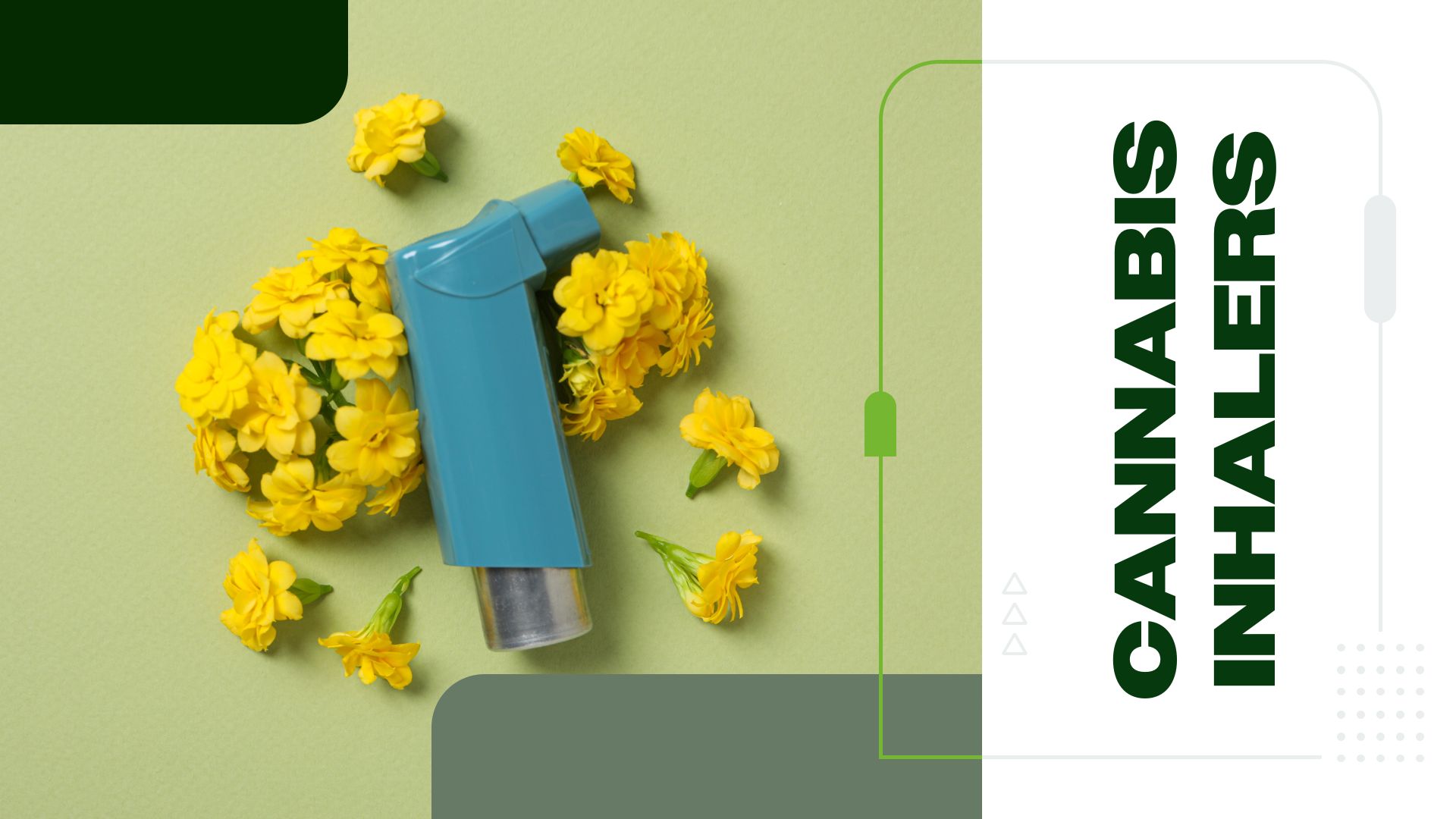
Exploring Cannabis Inhalers: Benefits and Bioavailability
Imagine getting the benefits of cannabis without the smoke, odor, or inconvenience of traditional methods. Enter cannabis inhalers, a game-changer in the world of cannabis consumption. These innovative gadgets offer a discreet, precise, and effective way to enjoy the effects of cannabis. So, whether you’re a seasoned user or a curious newcomer, learning about the…

Do Weed Carts Expire?
Have you ever wondered if your weed cart has an expiration date? Just like any other product, cannabis carts have a shelf life, and using an expired one could lead to a less enjoyable experience. In this article, we’ll explore how long these carts last, what signs to look for when they go bad, and…

What Is THC Powder (And How To Make It)
Cannabis has evolved beyond traditional buds, joints, and bongs — now, it’s available in various forms like oils, concentrates, beverages, and even lotions. One of the latest innovations is powdered THC. This new form of cannabis is convenient for storage and quick to take effect, making it a potential game-changer in the cannabis world. Let’s…
Other Categories
It's time to clear the smoke.
Sign up for our newsletter
Search by State
Learn the process in your state
Terms Privacy Policy Advertising Agreement Content Disclamer
Get your medical marijuana card today Sign up in under 5 minutes
Content Disclamer
The statements made regarding cannabis products on this website have not been evaluated by the Food and Drug Administration (FDA). Cannabis is not an FDA-approved substance and is still illegal under federal law. The information provided on this website is intended for educational purposes only and is not intended to diagnose, treat, cure, or prevent any disease. It is not intended as medical advice and should not be considered as a substitute for advice from a healthcare professional. We strongly recommend that you consult with a physician or other qualified healthcare provider before using any cannabis products. The use of any information provided on this website is solely at your own risk.
Please Choose a star rating 1-5 below
Captcha + 3 = 11
Krasnogorsk (Q155569)
| Language | Label | Description | Also known as |
|---|---|---|---|
| English |

Wiktionary (0 entries)
Multilingual sites (0 entries).
- Pages with maps
Navigation menu
Russian Strikes Kill More Than 50 in Ukraine, Zelensky Says
Two ballistic missiles hit a military academy and a neighboring hospital in eastern Ukraine, the latest in a string of deadly Russian attacks.
- Share full article

Maria Varenikova and Marc Santora
Here is what happened.
A Russian missile strike killed more than 50 people and injured scores of others on Tuesday, Ukrainian officials said, the latest in a series of devastating bombardments of Ukraine and one of the deadliest attacks of the two-and-a-half-year war.
Two ballistic missiles hit a military academy and a neighboring hospital in the eastern Ukrainian city of Poltava, President Volodymyr Zelensky said. Ukraine’s prosecutor general’s office said 51 people were killed and rescue efforts were still ongoing.
The missiles struck with an unforgiving quickness: The Ukrainian Defense Ministry reported that the gap between the sounding of warning sirens and the strike was so short that many people were killed on their way to shelter.
Here is what else to know:
Heavy fighting: The attacks come at a particularly active moment in the war . Ukraine is pressing an offensive into Russian territory while Moscow’s forces are advancing with fierce assaults in Ukraine’s east and aiming to capture the transit hub of Pokrovsk.
Cadets targeted: Ukrainian news outlets reported that those who died were cadets of the Poltava Institute of Military Communications. It would not be the first time that Russia attacked Ukrainian troop concentrations. Last fall, a Russian missile struck a medal ceremony for artillery troops in the Zaporizhzhia region, killing 19 soldiers in an episode that stirred criticism of the military and civilian leadership.
Mourning victims: Local authorities in Poltava announced three days of mourning. “My condolences to all the families and friends,” Mr. Zelensky said in a video address, adding that he had ordered an investigation into the strikes. A search and rescue operation was underway, and local government reports said many people were lining up to give blood.
Putin traveling: Amid Moscow’s latest deadly attack, President Vladimir V. Putin of Russia was in Mongolia , making his first state visit to a member nation of the International Criminal Court since it issued a warrant for his arrest last year. Mongolia, highly dependent on Russia for energy, gave Mr. Putin a red-carpet welcome. Ukrainian officials expressed outrage over the visit, warning they would work to “ensure that this has consequences” for Mongolia.
Nataliia Novosolova contributed reporting.
James C. McKinley Jr.
Just after the missiles struck, there were reports in the Ukrainian media that cadets had been lined up outside the military school. Vladimir Rogov, a Kremlin-appointed occupation official in southern Ukraine, also claimed the missiles hit cadets gathered for an event. But Ukraine’s defense minister, Dmytro Lazutkin, denied on national television that the victims were participating in a parade or ceremony, saying that classes were underway when the air raid sirens sounded.
Eve Sampson
Here are some of the other deadly strikes in Ukraine’s war with Russia.
The Russian missile strike Tuesday on a military academy and nearby hospital in eastern Ukraine, which killed more than 50 people, was one of the deadliest attacks since Moscow’s full-scale invasion of Ukraine in February 2022.
At least 11,520 civilians had been killed in the war as of July 2024, according to a United Nations report, which added that the actual tally may be higher. The number of troops killed is harder to pin down. U.S. officials said in August that nearly 500,000 soldiers had been killed or wounded on both sides, though they cautioned that Moscow likely undercounts its casualties, and Kyiv does not disclose official figures.
Here are some of the deadliest attacks of the past two years:
July 8, 2024: A Russian missile destroyed Ukraine’s largest children’s hospital , in Kyiv, part of a barrage of bombings across the country that killed at least 38 people.
Jan. 24, 2024: A Russian military plane crashed near the border with Ukraine, killing 65 Ukrainian prisoners of war, Russian officials said. They accused Ukraine of striking the aircraft with missiles. Russia’s claims could not be independently verified.
Oct. 5, 2023: More than 50 people were killed in a strike in Hroza, a small Ukrainian village with no obvious military ties. Ukrainian officials blamed a Russian Iskander missile.
Jan. 15, 2023: A Russian missile with a 2,000-pound warhead obliterated an apartment complex in Dnipro, killing 46 people, including six children.
Sept. 30, 2022: Russian missiles struck a convoy of vehicles transporting people fleeing fighting in the Zaporizhzhia region of Ukraine, killing at least 30 people and wounding 88 others, local Ukrainian officials reported.
July 9, 2022: An apartment complex in Chasiv Yar, a small city in Donetsk Province, was hit by a Russian strike, killing at least 43 people, according to local emergency services .
May 17, 2022: Ukraine’s president, Volodymyr Zelensky, said 87 people were killed in a Russian airstrike in Ukraine’s northern Chernihiv region.
April 8, 2022: Russian shelling killed more than 50 civilians at a train station in Kramatorsk, in Donetsk Province. This attack marked the start of Russia’s campaign to seize the Donbas region.
March 16, 2022: A Russian airstrike hit a theater in Mariupol with the word “children” written in large white lettering outside to signal that the building was sheltering civilians. Estimates about the death toll vary. Amnesty International, a British-based nonprofit, reported at least 12 people were killed but survivors told a reporter from The Times that between 60 and 200 people were killed.
March 13, 2022: Russian missiles hit a military base in Yavoriv, near the Polish border. The strike killed at least 35 people and injured at least 134 more, according to Ukrainian officials. Russia’s Defense Ministry claimed it killed 180 foreign fighters in the attack. The New York Times could not independently verify either claim.

Advertisement
Marc Santora
Russia bombed a university campus in the town of Sumy in northeastern Ukraine late Tuesday, Ukrainian officials said . Emergency crews were responding to the scene. There was no immediate information on the extent of the damage or casualties. Sumy sits just across the border from the Russian Kursk region, where Ukrainian forces have seized hundreds of square miles of territory during a surprise offensive that began last month.
Zolan Kanno-Youngs
A White House spokesman, John F. Kirby, said the Russian ballistic missile strike on a Ukrainian military academy in Poltava was “just another horrific reminder of the extent of" President Vladimir Putin’s "brutality towards the people of Ukraine and the manner in which he’s trying to punish them for his own invasion of that country.”
Anushka Patil
Zelensky has confirmed that 51 people were killed in the Russian strike on Poltava and said that the number of wounded had risen to 271. Some people remain under the rubble and rescue efforts were continuing, he said.
Andrew E. Kramer
The government of President Volodymyr Zelensky plans to dismiss half the ministers in the cabinet on Wednesday, a senior lawmaker in the president’s party, Davyd Arakhamia, said, in a significant leadership shake-up coming amid a wave of Russian missile strikes and swift advances in both directions along the front lines.
The commander of the Ukrainian military, Gen. Oleksandr Syrsky, said that the Russians used two Iskander missiles in Tuesday’s deadly attack in Poltava. “Dozens of people found themselves under the rubble,” the general wrote in a statement . He added: “The aggressor country must answer for every person killed, for every life mutilated.”
Yurii Shyvala
Air raid sirens sounded twice while I was at the military institute. Each time, rescuers and cadets ran to take cover from a possible repeated strike. The entire area is littered with broken glass, and nearby high-rise buildings are missing windows and, in some cases, doors.
When I arrived at the scene of the missile strike, one young soldier, who asked not to be identified by last name, said he was inside one of the military training buildings when the first missile hit. “After the first strike, I was blown under the stairwell by the shock wave,” said Markiyan, 25. “When I was trying to recover and continue to take cover, the second strike occurred.”
He said the strikes hit, one after another, shortly after air raid sirens sounded, and people were sprinting toward bomb shelters. “Unfortunately, there was not enough time for all the people to run to the shelter,” he said. “There was too little time between the air raid alert and the first strike.”
Marc Santora Liubov Sholudko and Ephrat Livni
An emergency volunteer describes a horrific scene after the missile strike in Poltava.
Rescue workers from the State Emergency Service were already on the scene, desperately searching for survivors, when Denys Kliap arrived. They were pulling bodies from the rubble “without legs, others without arms, some even without heads,” he said.
Shattered glass was everywhere. Nearby buildings showed gaping holes where windows and doors had been blasted off.
Mr. Kliap, the 26-year-old director of Free and Unbreakable , a volunteer rapid response team in the eastern Ukrainian city of Poltava, had seen many such scenes of carnage. But the devastation of the strikes on Tuesday still shocked him.
“When we arrived, the only thing I remember was the pile of bodies scattered all over the territory of the institute,” he said.
Russian missile strikes on a military academy and a neighboring hospital in Poltava, about 100 miles from the Russian border, had residents scrambling to reach shelters on Tuesday, often unsuccessfully, with many reporting that sirens sounded only very shortly before the attacks.
President Volodymyr Zelensky said the strikes had been carried out with ballistic missiles, which can travel at supersonic speed and reach a target anywhere in Ukraine in a matter of minutes.
“Unfortunately, there was not enough time for all the people to run to the shelter,” said Markiyan, 25, a young soldier who asked not to be identified by last name and said he was inside a building in the complex of the military training institute that was hit. “There was too little time between the air raid alert and the first strike,” he said.
Markiyan, who appeared to be in shock and had minor shrapnel wounds on his hands and face, said the strikes hit in rapid succession, shortly after air raid sirens sounded, and that people were sprinting to bomb shelters. “After the first strike, I was blown under the stairwell by the shock wave,” he said. “When I was trying to recover and continue to take cover, the second strike occurred.”
The soldier struggled to express and formulate his thoughts, mentioning that many of his friends remained trapped under the rubble. But his account of the timing echoed those of others in the city, like Olena Serdyuk, who told the BBC : “The air raid alert started in just a minute, and then there were two explosions.”
The strikes on Tuesday left more than 50 people dead and more than 200 injured. It was the latest in a string of deadly Russian attacks.
Air raid sirens continued to sound as emergency crews worked at the site of the strikes late Tuesday. Images from the scene showed buildings at the military institute gutted but still standing.
In the block where the military institute stands, mobile air defense units were stationed, ready to shoot down any additional aerial threats that might target the complex again.
Just after the missiles struck, there were reports in the Ukrainian media that cadets had been lined up outside the military school. Vladimir Rogov, a Kremlin-appointed occupation official in southern Ukraine, also claimed that the missiles hit cadets gathered for an event. But a spokesman for Ukraine’s defense ministry, Dmytro Lazutkin, denied on national television that the victims were participating in a parade or ceremony, saying that classes were underway when the air raid sirens sounded.
Mr. Kliap said in a telephone interview on Tuesday evening that it did not appear to him that there had been some sort of gathering at the military institute at the time of the strikes because the victims he saw at the scene were spread over a wide area. He noted that it appeared a number of victims were caught in the blast as they raced to the shelter. “I doubt it was a gathering,” he said. “And from what we’ve heard, everyone says there wasn’t one.”
With more than 200 people injured, he said, the local hospitals were overwhelmed.
“The hospitals are full,” he said. “All the doctors who were on vacation have returned to work because the situation is very critical.”
After the first chaotic hours following the attack, when his team helped emergency workers tend to the wounded and pull the dead from the ruins, Mr. Kliap said he spent the evening helping civilians living nearby board up windows blown out by the blast, and providing assistance to particularly vulnerable people whose homes had been struck.
“We are providing temporary help to allow them to sleep at night, prevent rain from coming in, and avoid further consequences,” he said.
They also brought about 300 meals for emergency crews as they worked late into the night
“It was very terrifying,” Mr. Kliap said, describing what he’d seen in his city that day. “We’ve never seen anything like this in Poltava before.”
But Poltava is no stranger to war, historically, and the strike in the city has a particular resonance for Russia. It is the site of a consequential battle in 1709 between Sweden and Russia — with Ukrainian factions joining both sides — that marked the start of Russia’s dominance in the Baltic region and dashed the dreams of Ukrainian nationalists of the time who had sided with Sweden.
Poltava was largely destroyed in World War II, and the modern city has in great part been reconstructed since. It’s now home to about 450,000 people, according to local authorities, and is a hub of tech development.
In a note offering condolences to the relatives of the dead in Tuesday’s strike, Ukraine’s first lady, Olena Zelenska, wrote, “Russia is taking away our most valuable asset, our lives.”
An earlier version of this article misstated the position of Dmytro Lazutkin. He is a defense ministry spokesman, not the defense minister.
How we handle corrections
Maria Varenikova
The head of Ukraine’s electric company is fired as Russia targets the power grid.
The head of Ukraine’s electric company was fired on Monday, the utility said, just a week after a major Russian aerial attack on the power grid caused blackouts in Kyiv and other cities.
Volodymyr Kudrytsky — who was appointed to head Ukrenergo in 2020, before the full-scale Russian invasion — was removed as CEO after a vote from the supervisory board on Monday, according to a statement the board released Tuesday.
Several Ukrainian media outlets including Ukrainska Pravda , Forbes and Censor.net , citing government sources, said Mr. Kudrytsky had been blamed for failing to complete defensive fortifications at power plants before Russia’s Aug. 26 strike — the largest targeting energy infrastructure since the 2022 invasion.
The firing has ignited a political fight over the country’s energy sector, which has been one of Russia’s main targets over the last few years as it attempts to undermine the Ukrainian economy and domestic support for the war.
Two members of Ukrenergo’s supervisory board, Daniel Dobbeni and Peder Andreasen, said in statements that they had resigned in protest over the firing, calling the decision “politically motivated.”
Mr. Kudrytsky in a Facebook post on Tuesday denied that he had been fired for failing to protect the energy infrastructure, and said he had been the victim of a smear campaign by unidentified people.
On Tuesday, four government officials also submitted their resignation requests to the Ukrainian parliament, according to the parliament’s speaker Ruslan Stefanchuk . They include key figures, like Oleksandr Kamyshin, Ukraine’s minister for strategic industries, and Denys Maliuska, Ukraine’s justice minister, as well as the environmental minister and the chairman of the state property fund.
Mr. Kudrytsky’s firing could alienate donors who have helped keep the power system afloat, Svyatoslav Pavliuk from Energy Efficient Cities of Ukraine, an advocacy group for the energy industry, wrote in a post on Facebook. “Consequences of such decisions will be major,” he said.
On Monday, Russian shelling damaged one of two electric lines providing power to the Russian-occupied Zaporizhzhia nuclear power plant, raising risks to the reactor cooling pumps just as the United Nations nuclear regulator planned a visit to the site.
The Zaporizhzhia nuclear plant, the largest in Europe, has been idle for much of the war, after it was captured by Russian forces in early 2022, but still requires power for cooling. It relies on overhead lines from the Ukrainian grid that cross the front line and are at risk.
Ukraine’s nuclear energy company, Energoatom, said in a statement that the line damaged in Monday’s bombardment raised that risk, since if the second power source is also cut, the plant would have to rely on backup diesel generators, as it has for short periods several times since Russia’s invasion.
Similar damage happened in the late August attack, which forced four nuclear reactors in Ukrainian government-controlled territory to switch off temporarily as a safety measure.
The director of the International Atomic Energy Agency, Rafael Grossi, was in Kyiv Tuesday ahead of a planned visit to the Zaporizhzhia station. Mr. Grossi wrote on social media that his goal was “to continue assistance and help prevent a nuclear accident.”
After two years of strikes on energy infrastructure, rolling blackouts now affect all of Ukraine. Two major hydroelectric power plants have been destroyed or heavily damaged, and about half of the country’s thermal power plants’ generating capacity has been destroyed, along with damage to transformer stations.
With power out for many hours a day in most homes, solar panels and backup batteries are out of stock with dozens of Ukrainian companies. In some cases, the wait time for a purchase is more than a month. Most apartments are already dark every evening.
Cassandra Vinograd
The death toll in Poltava has climbed to 51, according to Ukraine’s prosecutor general’s office. It said in a statement on Telegram that rescue efforts were still ongoing.

Recent attacks renew Ukraine’s pleas for more air defense systems.
President Volodymyr Zelensky of Ukraine reiterated a longstanding plea for more air defense systems from Western allies after Tuesday’s ballistic missile strike killed dozens in eastern Ukraine, the latest in a string of deadly attacks.
“We continue to urge everyone in the world who has the power to stop this terror: Ukraine needs air defense systems and missiles now, not sitting in storage,” Mr. Zelensky said in a message on social media.
Ballistic missiles can travel faster than the speed of sound and reach a target anywhere in Ukraine in a matter of minutes, which gives little to no time for air raid warnings to sound and help people get to safety. Ukraine’s Defense Ministry said the gap between the sounding of warning sirens and the strike in Poltava was so short on Tuesday that many people were killed on their way to shelter.
Ukraine has begged since the outset of Russia’s full-scale invasion in February 2022 for more tools to close its sky to Russian missiles. But the first Patriot missile systems from the United States and Germany — the only proven defense against ballistic missiles — did not arrive until the spring of 2023.
The Patriot was originally designed to hit aircraft but was re-engineered after the Gulf War to be primarily used to strike tactical ballistic missiles, as those weapons grew in prevalence and importance on the battlefield. It is one of the scarcest weapons systems in the U.S. arsenal, in part because they are in demand around the globe and because they are expensive and take a long time to produce.
Mr. Zelensky of Ukraine has said he desperately needs at least seven Patriot batteries to fend off attacks across the country. Germany has sent three and, in July, President Biden announced the deployment of a second Patriot missile system from the United States. Other American allies also have Patriots: Romania has pledged one, and the Netherlands has given parts of the complex system. U.S. officials have said they hope European powers will send more.
It was unclear if Ukraine used any of those Patriot batteries to try to fend off Tuesday’s attack in Poltava, the scale of which added fresh urgency to Ukrainian pleas for more defenses against ballistic missiles. Ukraine’s air force said the missiles had arrived “a matter of minutes” after they were launched.
“Ballistics are extremely dangerous, especially for the frontline areas,” the air force said in a statement to Ukrainian media.
At the same time, Ukrainian officials have urged allies to allow the use of long-range weapons provided by the West, such as rockets and cruise missiles, to strike back at targets inside Russia — a call Mr. Zelensky took up again on Tuesday.
“Long-range strikes that can protect us from Russian terror are needed now, not later,” he said on social media. “Every day of delay, unfortunately, means more lost lives.”
Marc Santora , Maria Varenikova and Lara Jakes contributed reporting.
Anton Troianovski
President Vladimir V. Putin of Russia spent the day in Mongolia , some 3,000 miles from the front line in the war against Ukraine. He said nothing in public about Ukraine, according to Kremlin transcripts of his remarks. It was the first time that a member nation of the International Criminal Court had hosted Putin since the court issued a warrant for the Russian president last year.
Matthew Mpoke Bigg
Russia’s attack on Poltava comes after a week of airstrikes and losses in Ukraine.
The Russian missile strike that killed more than 40 people in the eastern city of Poltava on Tuesday comes after a difficult few days for Ukraine, in which Moscow appears to have stepped up the tempo of its attacks, resulting in a wave of death and destruction.
At dawn on Aug. 26, residents of Ukraine’s capital, Kyiv, and many other cities woke to the sound of a Russian aerial assault . Moscow had launched more than 200 missiles and drones that hit targets in 15 regions of Ukraine. At least seven people were killed.
President Volodymyr Zelensky of Ukraine said that it was one of the largest attacks since Russia’s full-scale invasion began 30 months ago. The strikes knocked out power in some cities, including the capital, continuing a pattern of attacks on the country’s energy infrastructure.
Early the next morning, Russia launched another barrage, and one missile hit a hotel in the central Ukrainian city of Kryvyi Rih , killing four people. There was also a smaller round of strikes on Wednesday.
Moscow, which has been conducting aerial assaults on Ukraine every few weeks, gave no reason for the timing of the strikes, but it came weeks after Ukraine launched a surprise incursion into the southern Russian region of Kursk. President Vladimir V. Putin of Russia had vowed a decisive response.
Russia continued to pound urban areas close to the front lines throughout the week. On Wednesday, a Russian attack killed four members of a family in the tiny community of Izmailivka in the Donetsk region, the state prosecutor said. The settlement is a few miles west of Russian lines and close to the city of Pokrovsk, which Moscow is trying to capture.
Most of the missiles and drones were shot down by Ukraine’s air defense systems, the Air Force said. F-16 fighter jets, recently delivered by the country’s allies in NATO, were deployed in that effort, intercepting and shooting down three cruise missiles and a drone.
But on Thursday, the head of Ukraine’s air force, Lt. Gen. Mykola Oleshchuk, announced that one of the jets had crashed in combat during the operation on Monday and its pilot had been killed. He said that the crash, which came as a shock to many Ukrainians so soon after the deployment of the coveted fighter jets, was being investigated.
The following day, Mr. Zelensky announced that Lt. Gen. Oleshchuk had been fired.
Russian fire was also directed at Ukraine’s second largest city, Kharkiv, which is situated within range of Russian artillery and has been repeatedly assaulted since the start of the full scale war.
On Friday, a Russian glide bomb hit a children’s park and a mid-rise apartment block in the city, killing seven people and wounding nearly 60 others, according to the head of the regional military administration, Oleh Syniehubov.
Two days later, Russian forces bombarded residential areas of the city, wounding more than 40 civilians, Ukrainian officials said. At least 10 explosions had rocked the city.
Ukraine’s Parliament has held a moment of silence for those killed in the Poltava attack. Local authorities in Poltava have announced three days of mourning.
In a note offering condolences to the families of those killed and wounded, Ukraine’s first lady, Olena Zelenska, noted a higher toll than her husband had cited earlier on Tuesday. Zelenska said the missiles had killed 47 people and wounded 206. “Russia is taking away our most valuable asset, our lives,” she wrote.
The Ukrainian Air Force said that the short time between the warning siren and the strikes in Poltava was a result of the speed of the missiles used in the attack, which arrived “literally a matter of minutes” after they were launched. That suggests they were ballistic missiles, which can travel faster than the speed of sound and reach any target in Ukraine in a matter of minutes. Poltava is a little more than 100 miles from the Russian border.
Cassandra Vinograd and Matthew Mpoke Bigg
The pace of the war in Ukraine has been picking up in recent weeks.
The missile strike that killed dozens of people in the eastern Ukrainian city of Poltava on Tuesday served as a deadly reminder that the tempo of the war has been picking up, both on the ground and in the air.
The fortunes of the warring sides have ebbed and flowed since President Vladimir V. Putin ordered the full-scale invasion of Ukraine in February 2022. After a Ukrainian counteroffensive last summer aimed at reclaiming territory captured by Russia failed to meet key objectives , Moscow took the initiative and pushed to seize more ground.
The attack on Tuesday extended a wave of assaults on cities across Ukraine that Russia began a week ago, even as it pushes forward with fierce attacks along the front line in Ukraine’s east. Early on Monday, Russia carried out its third large-scale bombardment of Ukraine in a week, with explosions ringing out in Kyiv and several other cities after a volley of missiles was fired on the first day of the school year.
The nationwide barrages of missiles and drones have been among the largest since the start of Russia’s invasion.
In an effort to undermine Russia’s ability to supply its forces with fuel and cut into the energy revenues that fund the Kremlin’s war effort, the Ukrainian military has for months been targeting Russian oil and gas facilities with attacks. But the campaign has not yet had a demonstrable effect on the fighting inside Ukraine, where Russian forces made steady gains throughout the summer in the eastern Donbas region.
Ukraine had hoped that the long-awaited arrival of Western-supplied F-16 fighter jets would assist in repelling Russian attacks and forces. That effort suffered a blow last week when one of the warplanes crashed while defending against an intense Russian aerial attack, in what may have been a friendly-fire incident .
In an attempt to force Russia to divert forces away from eastern Ukraine, officials in Kyiv ordered an incursion into the Kursk region of Russia in early August. While Russia did send reinforcements to the region, the troops were not sent from eastern Ukraine.
Instead, Russia has pressed on in Ukraine’s east, advancing on the city of Pokrovsk, where the local authorities have urged civilians to evacuate . President Volodymyr Zelensky of Ukraine — who on Tuesday said the Ukrainian offensive in Kursk was going “according to plan” — has sent reinforcements to Pokrovsk, a vital transport and logistics hub for Ukrainian forces in the Donbas region.
The capture of Pokrovsk by Russian forces would be their biggest gain in the region since they seized the cities of Marinka and Avdiivka in January and February after intense ground fighting and bombardment.
It also would bring Russian forces one step closer to achieving a key goal for Mr. Putin: full control of the Donbas region .
Marc Santora contributed reporting.
The Russian claim that the high death toll came after military cadets gathered together at their institute could not be independently confirmed. But strikes as troops congregated to observe military protocol or receive awards have happened before in Ukraine. Last fall, a Russian missile struck a medal ceremony for artillery troops in the Zaporizhzhia region, killing 19 soldiers who had distinguished themselves as skilled artillerymen. That incident stirred criticism of the military and civilian leadership from fellow soldiers.
Ukraine’s public broadcaster, Suspilne, has aired an interview with a resident in Poltava. Olena Serdiuk, who lives near the military academy, told the broadcaster that she was in the bathroom with her child when the missiles hit nearby, and said there was almost no time between the air-raid alarm and the strike. “As soon as the alarm sounded, literally a minute later, there were two explosions, one after the other,” she said. “We thought that our building had been hit. All the windows are shattered, both in our apartment and in the neighbors’.”
The first numbers of dead and wounded reported after missile strikes are often undercounts that rise as rescuers clear rubble. Still, the initial count of 41 people killed in Poltava is among the largest from a single strike in Ukraine since Russia launched its full-scale invasion in February 2022. The deadliest attack was in May 2022, when officials said 87 soldiers were killed at a military training center in the Chernihiv region of northern Ukraine.
The strike in Poltava came after yet another night of Russian bombardments across Ukraine. A missile strike at around 11 p.m. Monday in the southern city of Zaporizhzhia killed two people, including an 8-year-old boy, Ivan Fedorov, the head of the Ukrainian military’s regional administration, said in a statement.

Vladimir Rogov, a Kremlin-appointed occupation official in southern Ukraine, claimed in a post on the Telegram messaging app that the missile strike had hit a military school that offers training in radar and electronic warfare when hundreds of cadets were gathering in formation. His claim, which might explain the high death toll, could not be independently verified.
The strike hit the Poltava Institute of Military Communications, a military academy in eastern Ukraine, President Zelensky said in a video posted to his Telegram channel. He said one of the buildings of the institute was “partially destroyed” and that people were “under the rubble.”

IMAGES
COMMENTS
He publishes widely in the field of Creative Education and the development of creative competencies and is the featured expert on creativity in the documentary Finding Creativity, to be released in 2021. ... The Education Hub has changed the way it provides webinar content, to enable us to continue creating our high-quality content for teachers
Setting Up a Learning Hub to Innovate Instruction. High school teachers can support engagement and innovation with STEAM and career-focused activities that tap into students' curiosity. When you walk into many schools these days, you will encounter updated 21st-century learning spaces with makerspace equipment, flexible seats, and projectors ...
Higher Education projects. Explore interdisciplinary activities and projects for college and university students. Get instant access to free courses and education resources, and connect with the creative teaching community. Join us now at Adobe Education Exchange.
The Tennessee Open Education Hub brings together the intellectual and creative power of faculty throughout the state, providing a place to build and share resources with the common goal of improving student learning outcomes. For more information about how Tennessee is making college more accessible and equitable, visit Tennessee Open Education.
In this video, Paul Collard, Chief Executive of Creativity, Culture and Education, discusses the features of an effective approach to creative education. Paul draws on his experience of observing, designing and delivering programmes, not only in England but elsewhere in Europe and the Asia Pacific region. Watch the Video
From the BU Hub Curriculum Guide "BU students across fields of study will benefit from learning how to think in new ways, imagine new possibilities, take new approaches, and/or make new things. Creative activity is a source of deep human satisfaction and common good. In addition, the ability to generate and pursue new ideas is quickly ...
Distance learning is a method of learning, where the teaching or lecturing is done virtually using the internet, eliminating the need for students to attend an in-person class or lecture. Common tools to enable distance learning are email, video conferencing, online portals intranets, and more. What types of resources does Adobe Education ...
While creativity is typically associated with curriculum areas such as the visual and performing arts, it has a place in every school subject. Definition Creativity is the interaction between the learning environment, both physical and social, the attitudes and attributes of both teachers and students, and a clear problem-solving process which produces an outcome. Creativity is highly ...
Creative education hub in the making. Alexander Wai Ping-kong, president of Hong Kong Baptist University. (FLORENCE LI / CHINA DAILY) Hong Kong Baptist University's new campus in Kowloon Tong, which will begin partial operations in the latter half of this year, is set to become a leading landmark in creative education, representing a new ...
Get the complete set of Creative Cloud apps and services for students, teachers and staff. Named user licenses are accessible at school or home, because creativity can happen anywhere. Classroom licenses also available for shared devices, perfect for computer labs. Minimum purchase applies. Call 800-685-3638.
He publishes widely in the field of Creative Education and the development of creative competencies and is the featured expert on creativity in the documentary Finding Creativity, to be released in 2021. ... The Education Hub has changed the way it provides webinar content, to enable us to continue creating our high-quality content for teachers
t0 The Creative Teacher Hub. Your gateway to the magic world of Creative Teaching, the core of educational innovations, where teaching meets creativity!! Since 2000: Empowering Teachers to Lead Change. Why Creativity in Education? Read More. Education is a journey of discovery, and in today's dynamic and ever-evolving learning landscape ...
Join Creative Partners and Education settings who are working together to develop learners' creativity skills and improve wellbeing through the Creative Wellbeing Fund. Hear from participants on the challenges, highlights and learning each project is experiencing. ... Creativity resources - National Improvement Hub. Creative Learning on ...
Our professional development generates break-through ideas, improves teamwork, and energizes participants. Learn to: Recognize and overcome blocks to creativity. Identify attitudes and behaviors conducive to creative thinking. Apply core concepts of creative thinking. Use a variety of thinking tools. Apply the CPS process to simulated or real ...
Creative education hub in the making. Hong Kong Baptist University's new campus in Kowloon Tong, which will begin partial operations in the latter half of this year, is set to become a leading ...
Inspire students with STEM exploration and Project-Based Learning. Engaged students are more focused in class, have fewer disciplinary issues, build stronger critical-thinking skills, and authentically connect to their learning. SmartLab environments and curriculum are designed to involve all students in learning that builds skills for college ...
EdTech Hub is a global research partnership. Our goal is to empower people by giving them the evidence they need to make decisions about technology in education. ... Girls' Education & Technology. Participation & Messaging. Teacher Continuous Professional Development . Country focus. We work directly with governments and partners in seven ...
Meta Creative Hub is designed for businesses to collaborate securely on ad mockups. You don't need any design skills or experience with Meta advertising. Creative Hub is for anyone who wants to build mockups for ads, share them with anyone and preview on mobile devices and computers. Anyone who wants to communicate their ideas for ads and ...
The Steps. Go to the Student BYOD Software Hub. Register using your @education.nsw.gov.au student email. Choose Adobe CC and click through the checkout process. Check your school emails for confirmation and link to 'redeem' your code or go back to your account in the BYOD Student Hub. Copy your redemption code.
Enough buttons and switches for all your creative needs. 8.5 / 10. $299 $399 Save $100 . The MasterHUB is a one-of-a-kind control panel that lets you cycle between multiple components to suit your ...
The Education Secretary has accepted the recommendations of the School Teachers' Review Body (STRB) and confirmed the teacher pay award for 2024-25, setting out what school teachers in England can expect to be paid next academic year.. The STRB is an independent group that makes recommendations on the pay of teachers in maintained schools in England and reports to the Secretary of State for ...
About Landau Institute. L.D. Landau Institute for Theoretical Physics of Russian Academy of Sciences was founded in 1964. It is located in the town of Chernogolovka, Moscow region where one of the RAS research centers.
Content Hub . Resources . Find a Dispensary Read Articles. 1.833.663.7284 [email protected]. ... Enhances creative thinking and problem-solving abilities. Many users report an increase in creative thoughts and inspiration while using Oreoz. ... The information provided on this website is intended for educational purposes only and is not ...
Krasnogorsk, Moscow Oblast. / 55.82167°N 37.33861°E / 55.82167; 37.33861. Krasnogorsk ( Russian: Красногорск, IPA: [krəsnɐˈgorsk]) is a city and the administrative center of Krasnogorsky District in Moscow Oblast, Russia, located on the Moskva River, adjacent to the northwestern boundary of Moscow. It has a population of ...
Description. Also known as. English. Krasnogorsk. town and administrative center of Krasnogorsky District of Moscow Oblast in Russia.
Krasnogorsky District (Russian: Красного́рский райо́н) is an administrative and municipal district (), one of the thirty-six in Moscow Oblast, Russia.It is located in the center of the oblast.The area of the district is 224.99 square kilometers (86.87 sq mi). Its administrative center is the city of Krasnogorsk. Population: 179,872 (2010 Russian census); 149,679 (2002 ...
A Russian missile strike killed more than 50 people and injured scores of others on Tuesday, Ukrainian officials said, the latest in a series of devastating bombardments of Ukraine and one of the ...